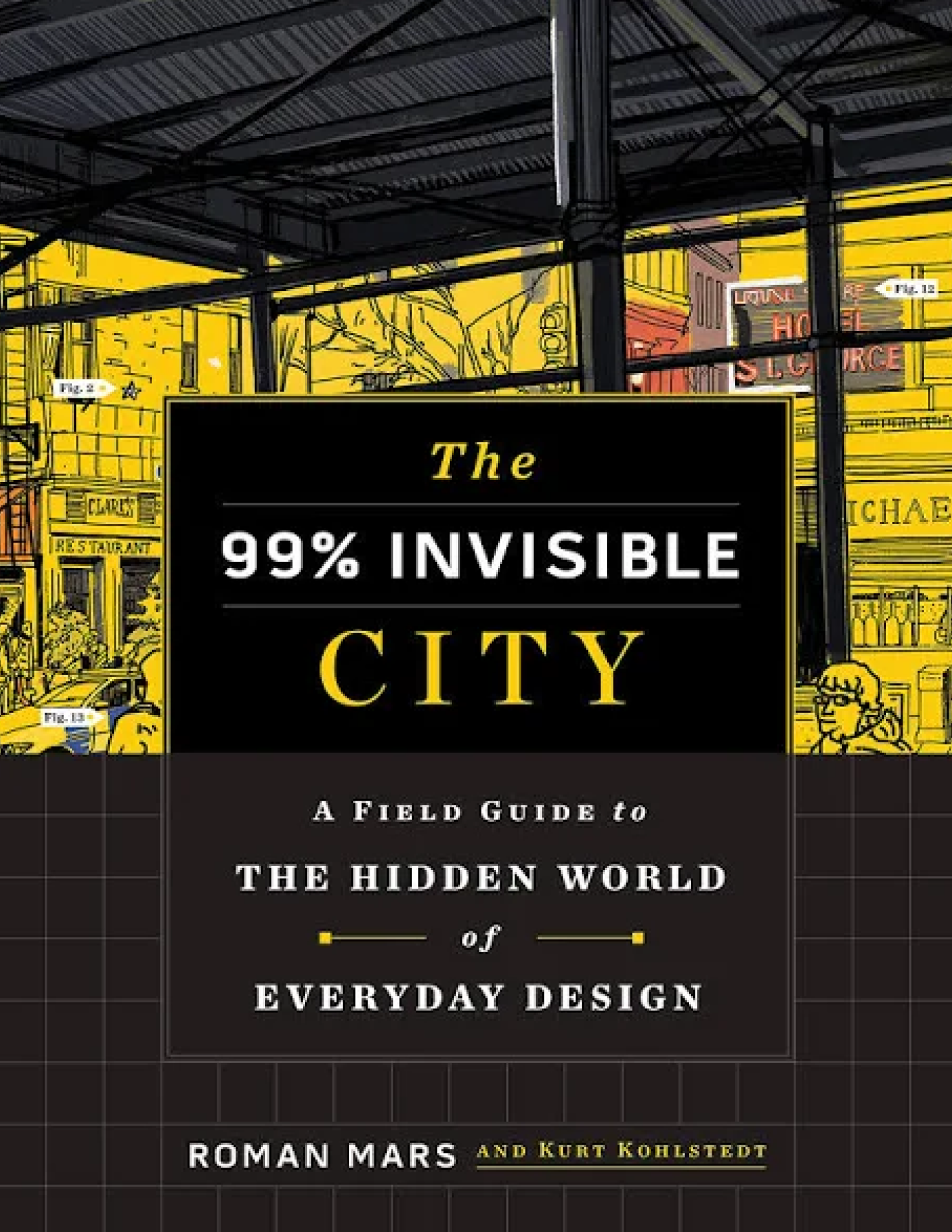A New Theory of Urban Design
In this groundbreaking volume, architect and planner Christopher Alexander presents a new theory of urban design which attempts to recapture the process by which cities develop organically. To discover the kinds of laws needed to create a growing whole in a city, Alexander proposes here a preliminary set of seven rules which embody the process at a practical level and which are consistent with the day-to-day demands of urban development.
He then puts these rules to the test, setting out with a number of his graduate students to simulate the urban redesign of a high-density part of San Francisco, initiating a project that encompassed some ninety different design problems, including warehouses, hotels, fishing piers, a music hall, and a public square. This extensive experiment is documented project by project, with detailed discussion of how each project satisfied the seven rules, accompanied by floorplans, elevations, street grids, axonometric diagrams and photographs of the scaled-down model which clearly illustrate the discussion.
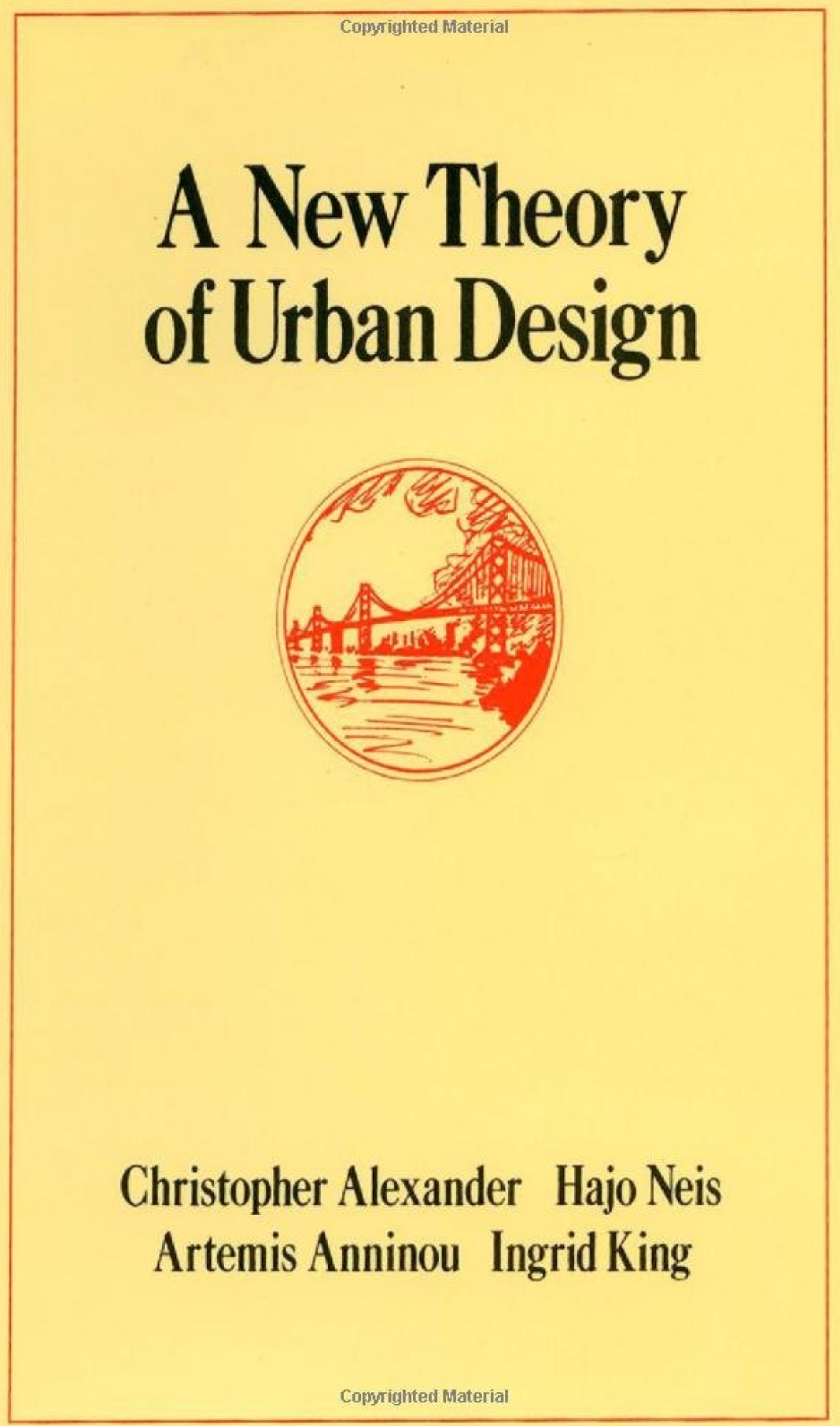
The Street Project
The Street Project is the story about humanity’s relationship to the streets and the global citizen-led fight to make communities safer.
Digging deep into the root causes of traffic violence, the filmmakers engage a diverse array of experts including street historian Peter Norton, city planner Jeff Speck, and urban design expert Mikael Colville-Andersen. These expert interviews are interwoven with the stories of real people working to make their communities safer.
Directed by Jennifer Boyd.
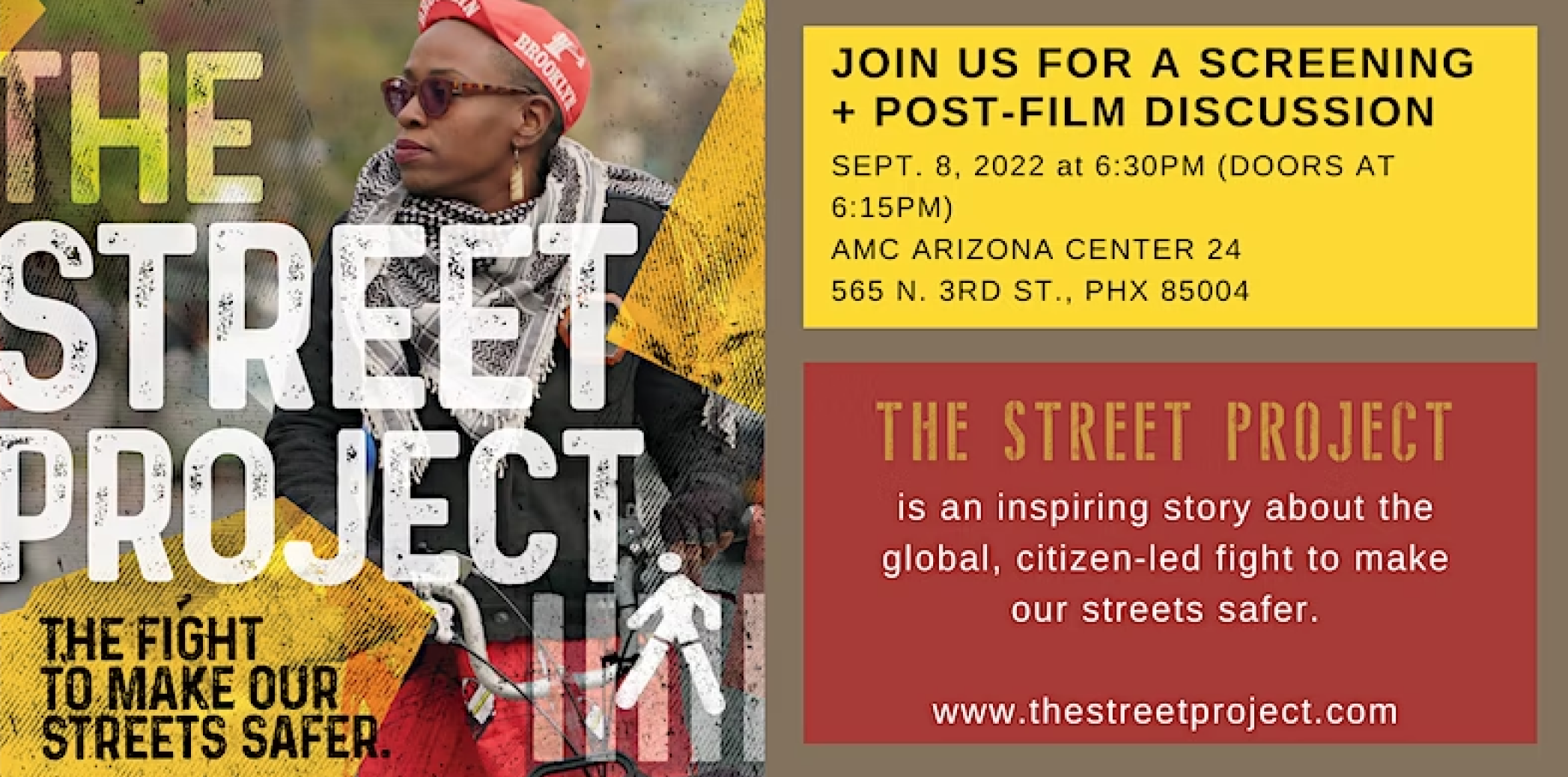
Emergent Tokyo
Tokyo is one of the most vibrant and livable cities on the planet, a megacity that somehow remains intimate and adaptive. Compared to Western metropolises like New York or Paris, however, few outsiders understand Tokyo’s inner workings. For cities around the globe mired in crisis and seeking new models for the future, Tokyo’s success at balancing between massive growth and local communal life poses a challenge: can we design other cities to emulate its best qualities?
Emergent Tokyo answers this question in the affirmative by delving into Tokyo’s most distinctive urban spaces, from iconic neon nightlife to tranquil neighborhood backstreets. Tokyo at its best offers a new vision for a human-scale urban ecosystem, where ordinary residents can shape their own environment in ways large and small, and communities take on a life of their own beyond government master planning and corporate profit-seeking. As Tokyoites ourselves, we uncover how five key features of Tokyo’s cityscape – yokochō alleyways, multi-tenant zakkyo buildings, undertrack infills, flowing ankyo streets, and dense low-rise neighborhoods – enable this ’emergent’ urbanism, allowing the city to organize itself from the bottom up. This book demystifies Tokyo’s emergent urbanism for an international audience, explaining its origins, its place in today’s Tokyo, and its role in the Tokyo of tomorrow. Visitors to Japan, architects, and urban policy practitioners alike will come away with a fresh understanding of the world’s premier megacity and a practical guide for how to bring Tokyo-style intimacy, adaptability, and spontaneity to other cities around the world.
By Jorge Almazán, Joe McReynolds, and Naoki Saito.

101 Things I Learned in Urban Design School
Students of urban design often find themselves lost between books that are either highly academic or overly formulaic, leaving them with few tangible tools to use in their design projects. 101 Things I Learned® in Urban Design School fills this void with provocative, practical lessons on urban space, street types, pedestrian experience, managing the design process, the psychological, social, cultural, and economic ramifications of physical design decisions, and more. Written by two experienced practitioners and instructors, this informative book will appeal not only to students, but to seasoned professionals, planners, city administrators, and ordinary citizens who wish to better understand their built world.
By Vikas Mehta and Matthew Frederick.
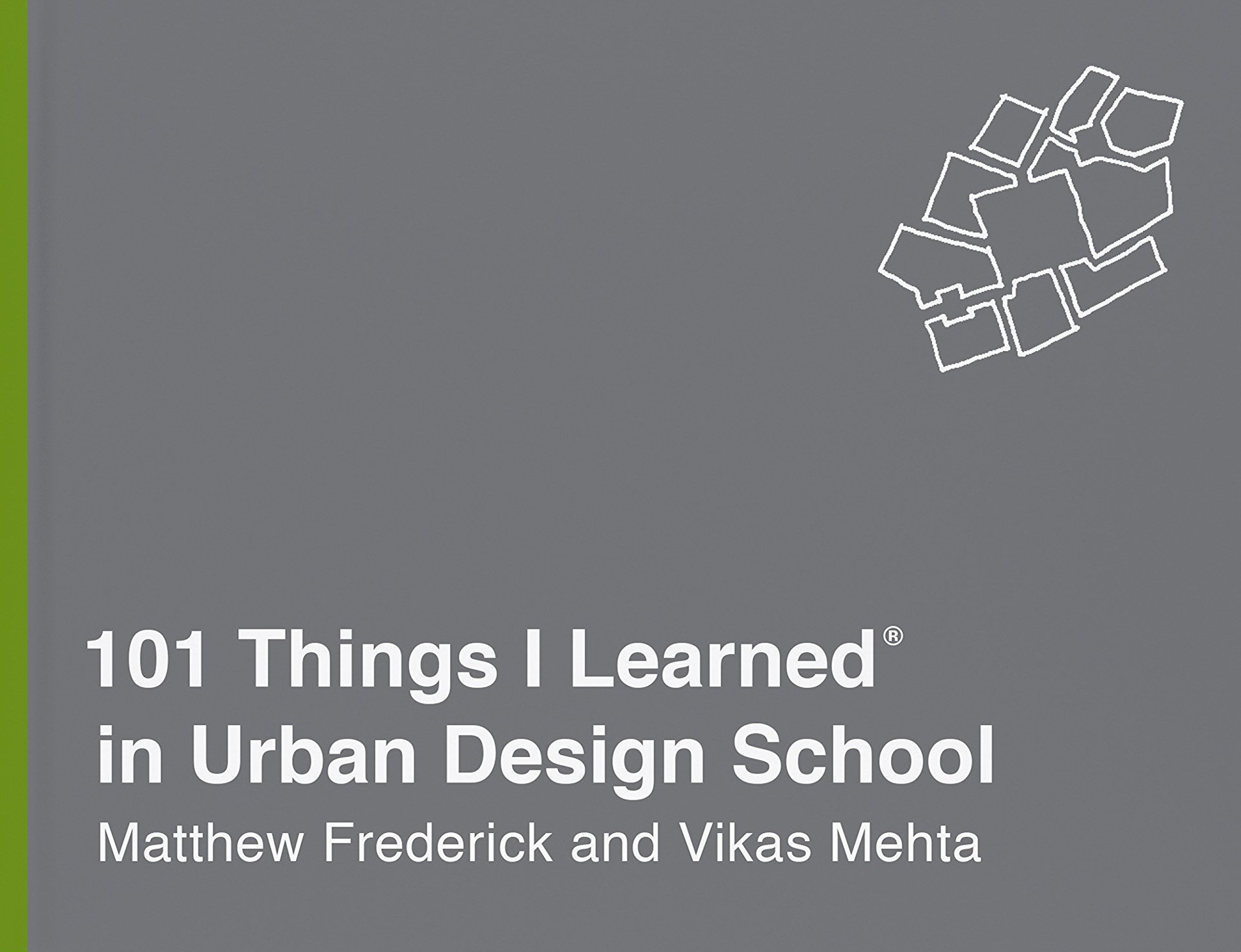
Subtract
We pile on “to-dos” but don’t consider “stop-doings.” We create incentives for good behavior, but don’t get rid of obstacles to it. We collect new-and-improved ideas, but don’t prune the outdated ones. Every day, across challenges big and small, we neglect a basic way to make things better: we don’t subtract. Klotz’s pioneering research shows us what is true whether we’re building Lego models, cities, grilled-cheese sandwiches, or strategic plans: Our minds tend to add before taking away, and this is holding us back.
But we have a choice—our blind spot need not go on taking its toll. Subtract arms us with the science of less and empowers us to revolutionize our day-to-day lives and shift how we move through the world. More or less.
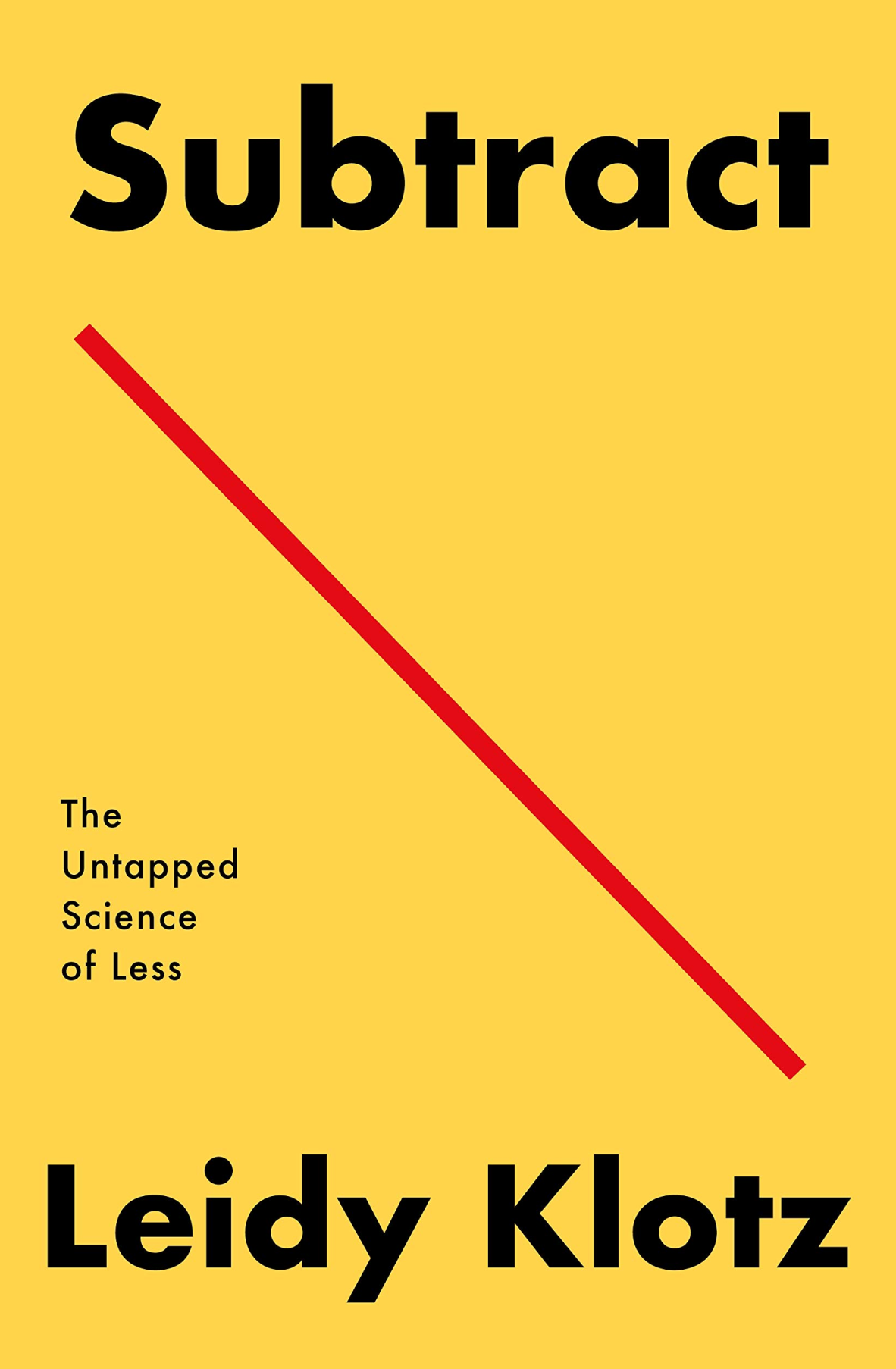
Atlas of Cities
The Atlas of Cities presents a unique taxonomy of cities that looks at different aspects of their physical, economic, social, and political structures; their interactions with each other and with their hinterlands; the challenges and opportunities they present; and where cities might be going in the future.
Edited by Paul Knox, with foreword by Richard Florida.
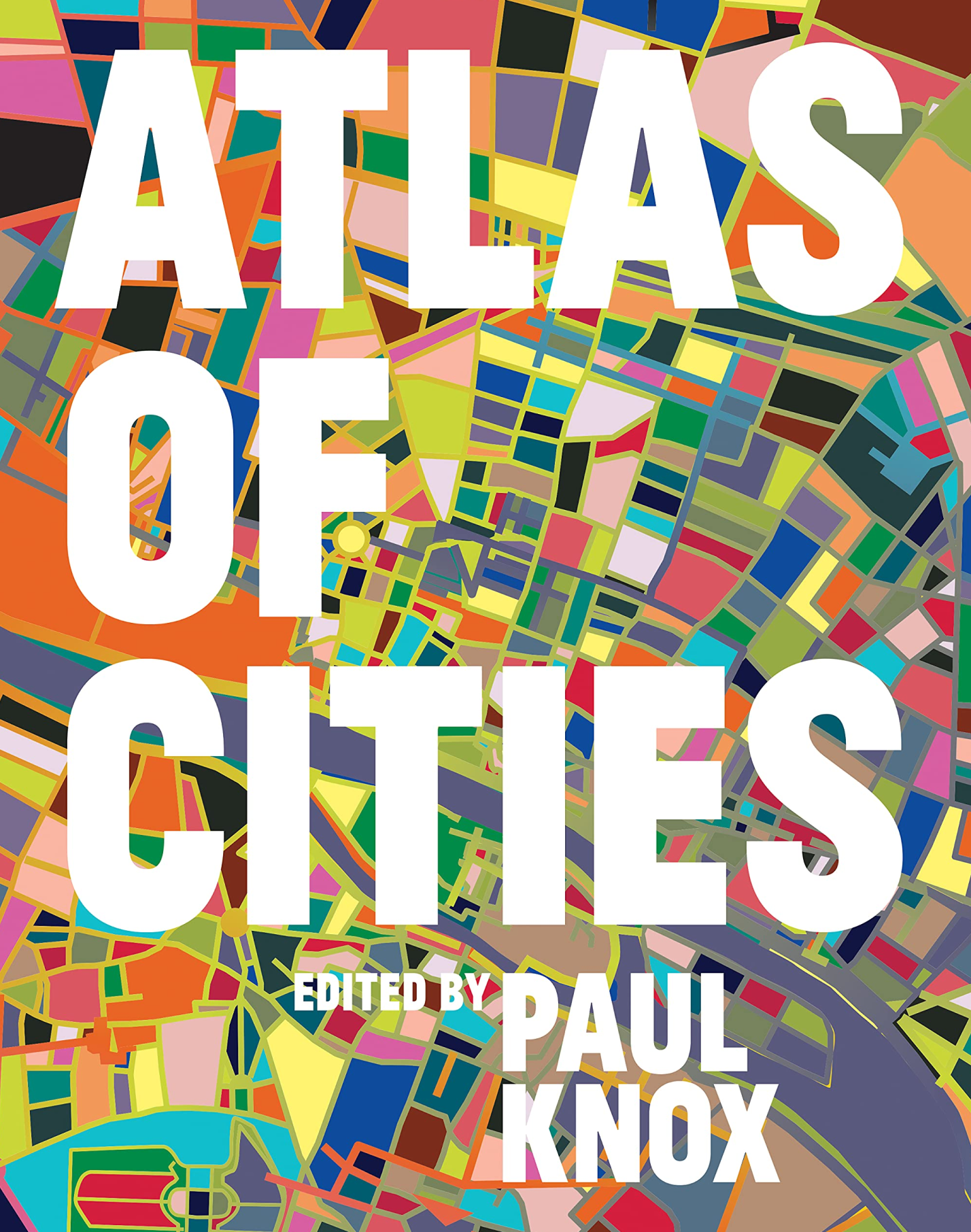
The Timeless Way of Building
In The Timeless Way of Building Christopher Alexander presents a new theory of architecture, building, and planning which has at its core that age-old process by which the people of a society have always pulled the order of their world from their own being.
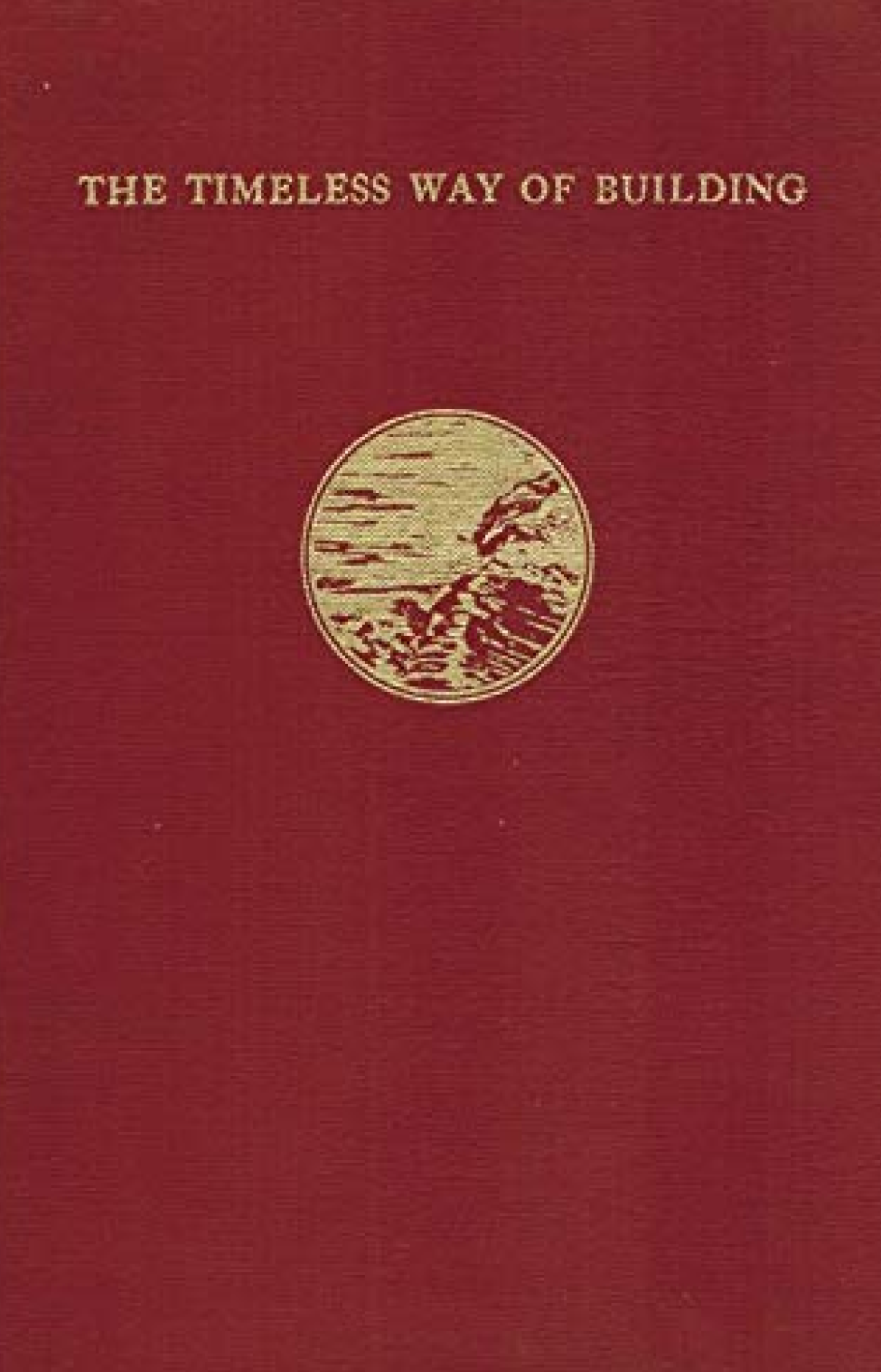
A Pattern Language
After a ten-year silence, Christopher Alexander and his colleagues at the Center for Environmental Structure are now publishing a major statement in the form of three books which will, in their words, lay the basis for an entirely new approach to architecture, building and planning, which will we
hope replace existing ideas and practices entirely.
The three books are The Timeless Way of Building, The Oregon Experiment, and this book, A Pattern Language. At the core of these books is the idea that people should design for themselves their own houses, streets, and communities. This idea may be radical (it implies a radical transformation of the architectural profession) but it comes simply from the observation that most of the wonderful places of the world were not made by architects but by the people.

The Oregon Experiment
The Oregon Experiment is the last book in series on architecture written by Christopher Alexander and his colleagues the Center for Environmental Structure. The other two books are The Timeless Way of Building and A Pattern Language.
This book is the master plan for the University of Oregon, and is now being implemented at that university; but it shows at the same time how any community the size of a university or small town might go about designing its own future environment-with all members of the community participating personally. It is a concrete example at the Center’s theories in practice, showing in simple detail, with numerous illustrations, how to implement six guiding principles: organic order, participation, piecemeal growth, patterns, diagnosis, and coordination.

The Well-Tempered City
In The Well-Tempered City, Jonathan F. P. Rose—the man who “repairs the fabric of cities”—distills a lifetime of interdisciplinary research and firsthand experience into a five-pronged model for how to design and reshape our cities with the goal of equalizing their landscape of opportunity. Drawing from the musical concept of “temperament” as a way to achieve harmony, Rose argues that well-tempered cities can be infused with systems that bend the arc of their development toward equality, resilience, adaptability, well-being, and the ever-unfolding harmony between civilization and nature. These goals may never be fully achieved, but our cities will be richer and happier if we aspire to them, and if we infuse our every plan and constructive step with this intention.
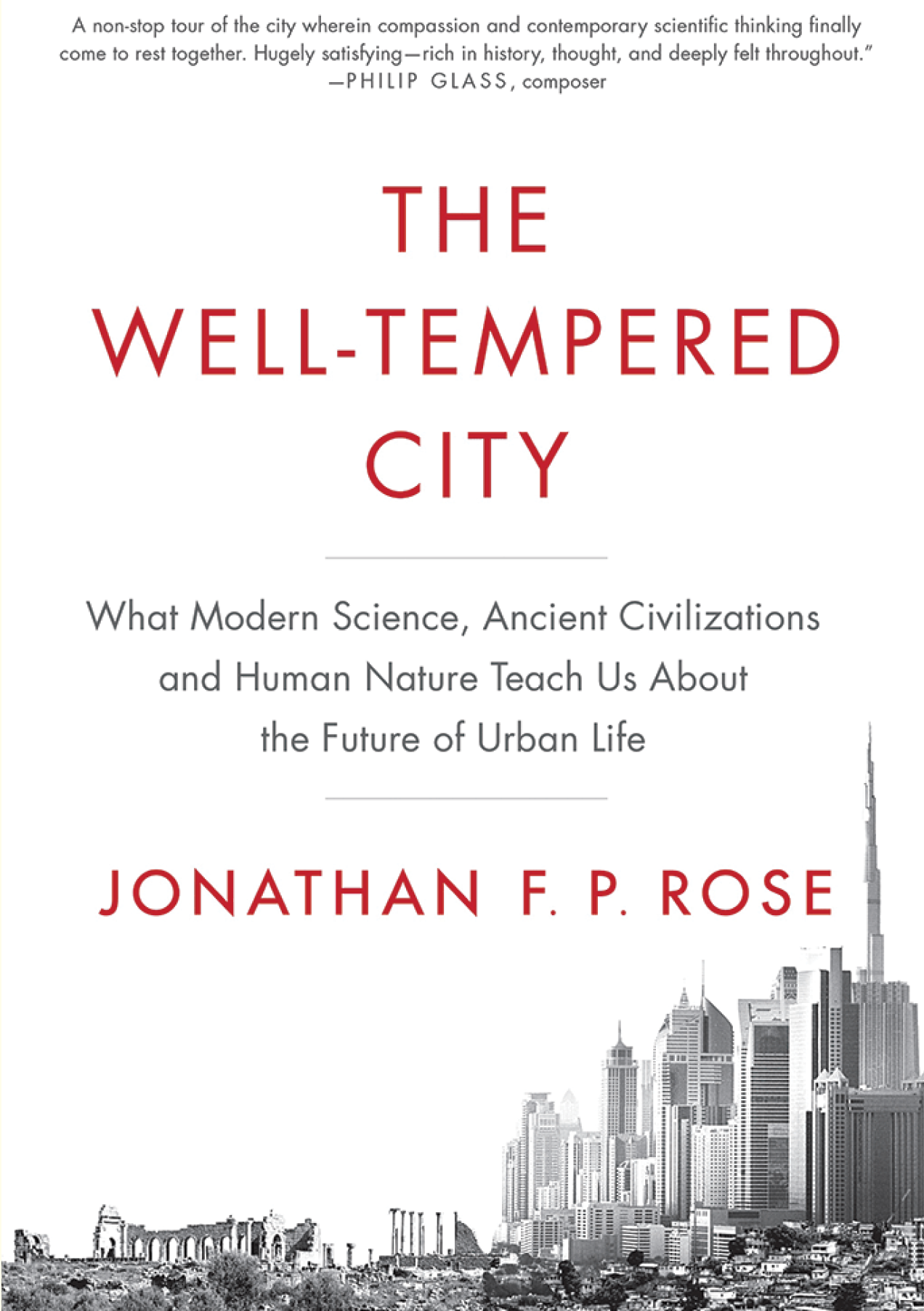
Icebergs, Zombies, and the Ultra Thin
In Icebergs, Zombies, and the Ultra Thin, Matthew Soules issues an indictment of how finance capitalism dramatically alters not only architectural forms but also the very nature of our cities and societies. We rarely consider architecture to be an important factor in contemporary economic and political debates, yet sparsely occupied ultra-thin “pencil towers” develop in our cities, functioning as speculative wealth storage for the superrich, and cavernous “iceberg” homes extend architectural assets many stories below street level. Meanwhile, communities around the globe are blighted by zombie and ghost urbanism, marked by unoccupied neighborhoods and abandoned housing developments.
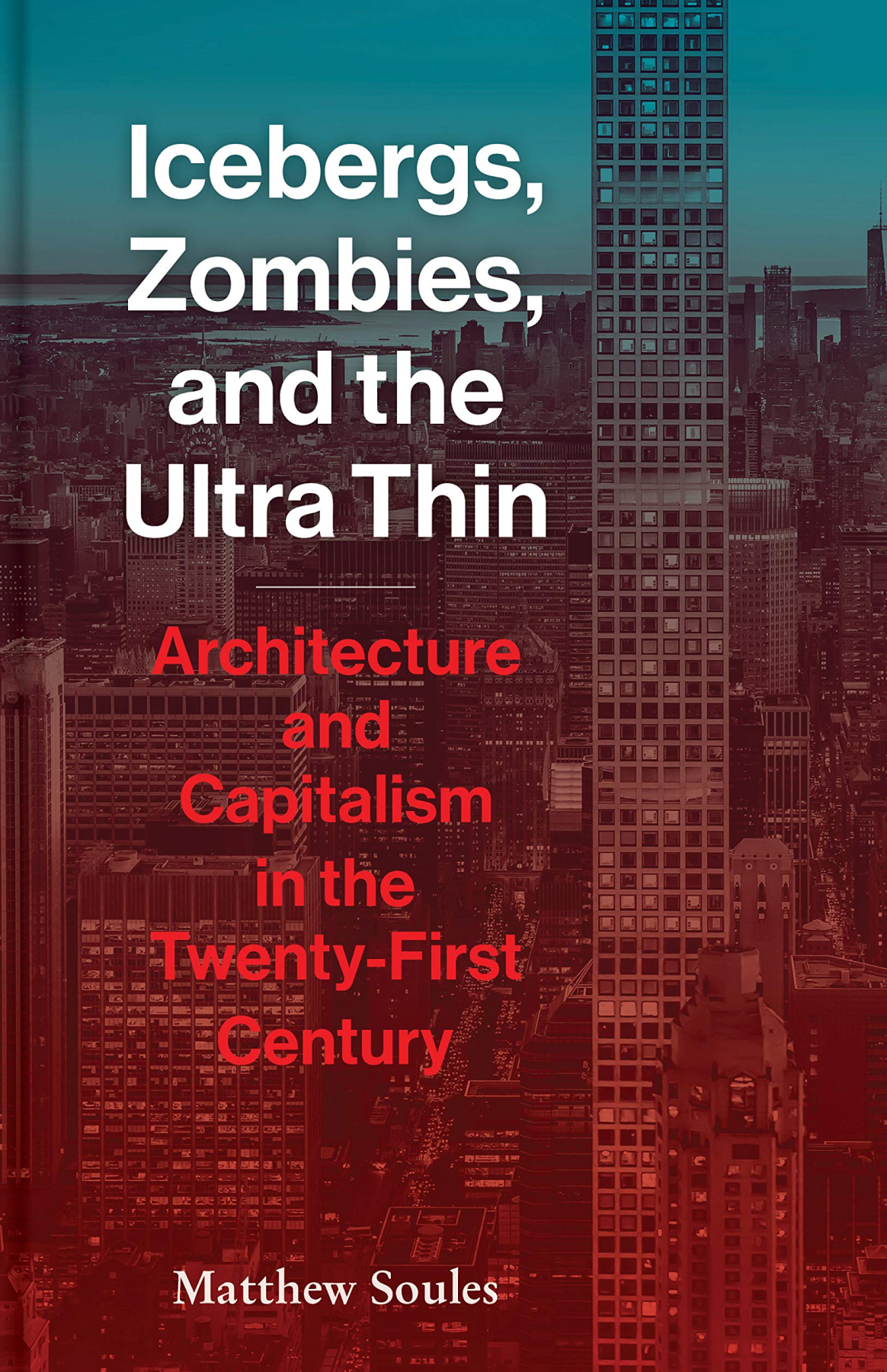
Age-Friendly Cities and Communities
As the drive towards creating age-friendly cities grows, this important book provides a comprehensive survey of theories and policies aimed at improving the quality of life of older people living in urban areas. Part of the Ageing in a Global Context series, Age-Friendly Cities and Communities gathers critical assessments from leading international researchers of the problems and potentials of designing environments that benefit citizens of all ages. The authors consider how cities respond to aging populations, their strategies for developing age-friendly communities, and the extent to which older people themselves can be involved in the co-production of advantageous policies and practices.
Edited by Tine Buffel, Sophie Handler, Chris Phillipson.

4 ways to make a city more walkable
Freedom from cars, freedom from sprawl, freedom to walk your city! City planner Jeff Speck shares his “general theory of walkability” — four planning principles to transform sprawling cities of six-lane highways and 600-foot blocks into safe, walkable oases full of bike lanes and tree-lined streets.
Watch this TED talk on YouTube.

Velotopia
In Velotopia: The Production of Cyclespace in Our Minds and Our Cities, architectural theorist and historian Steven Fleming, a leading international figure in bicycle urbanism and author of the bestselling Cycle Space (2013), argues that the best-connected cities in the future will be those that put cycling before walking and public transport. According to Fleming, cities organized around cycling will be greener and healthier, but also fairer and more accessible than today’s cities–more productive, comfortable, social and fun. In this volume, Fleming dares readers to think big, to radically reimagine cities and city life around movement on two wheels.

Cycle Space
In Cycle Space, architecture professor and cycling enthusiast Steven Fleming (or Dr. Behooving, as he is known to those who follow his blog, Behooving Moving) suggests new ways of designing better cities, thereby reducing emissions, commute times, ill health and sprawl in the process. Not only can architecture and urban design begin to optimize conditions for cycling; they can also take inspiration from the aesthetics and ethics of cycling as well. Fleming argues that understanding why more and more people are choosing bikes is key for discovering the full potential of the bicycle as a transformative force in the design of our cities. Cycle Space is a must-read for anyone interested in the nexus of architecture, cycling and urban design.
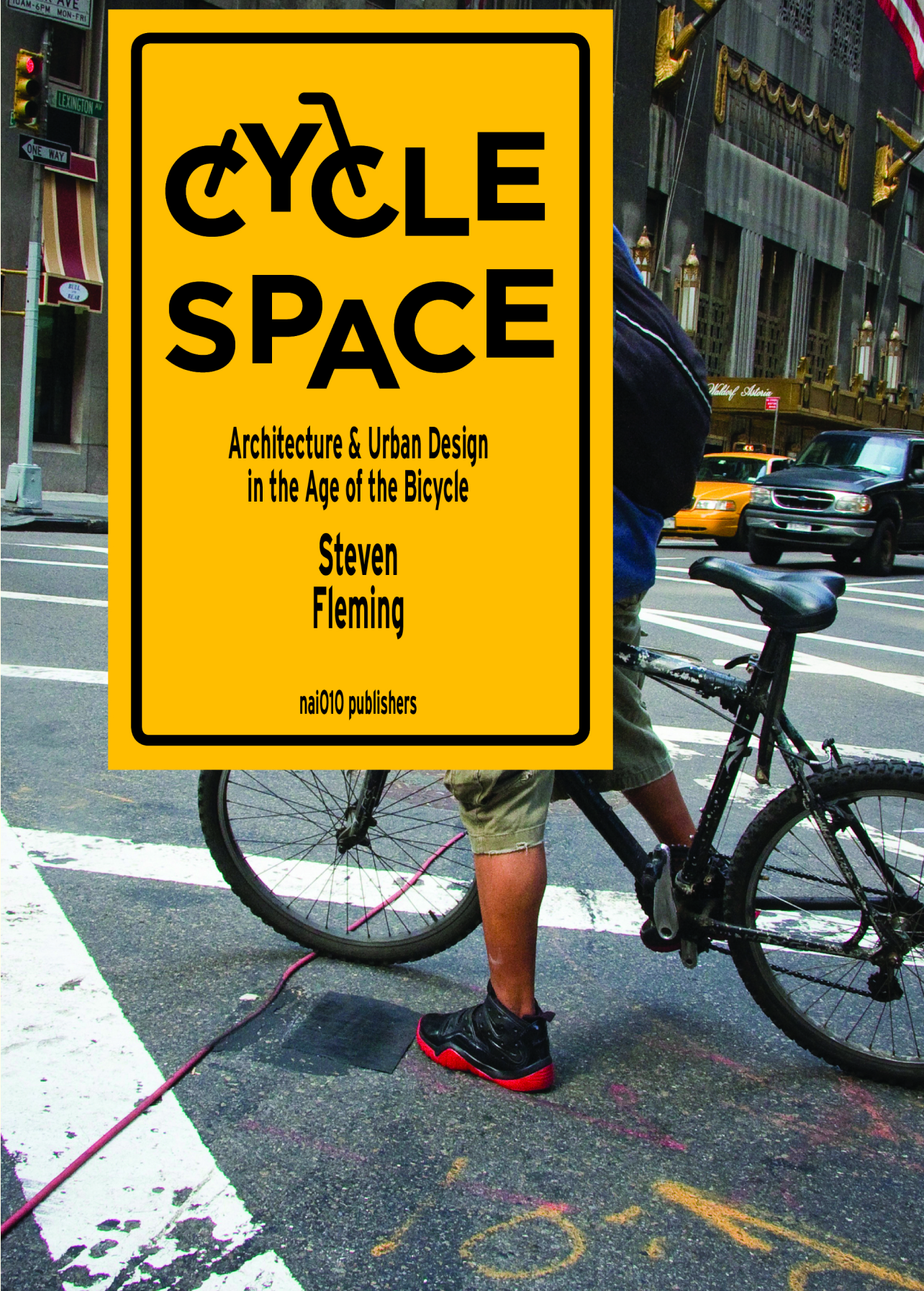
Livable Streets 2.0
Livable Streets 2.0 offers a thorough examination of the struggle between automobiles, residents, pedestrians and other users of streets, along with evidence-based, practical strategies for redesigning city street networks that support urban livability. In 1981, when Donald Appleyard’s Livable Streets was published, it was globally recognized as a groundbreaking work, one of the most influential urban design books of its time. Unfortunately, he was killed a year later by a speeding drunk driver. This latest update, Livable Streets 2.0, revisited by his son Bruce, updates on the topic with the latest research, new case studies and best practices for creating more livable streets.
It is essential reading for those who influence future directions in city and transportation planning.
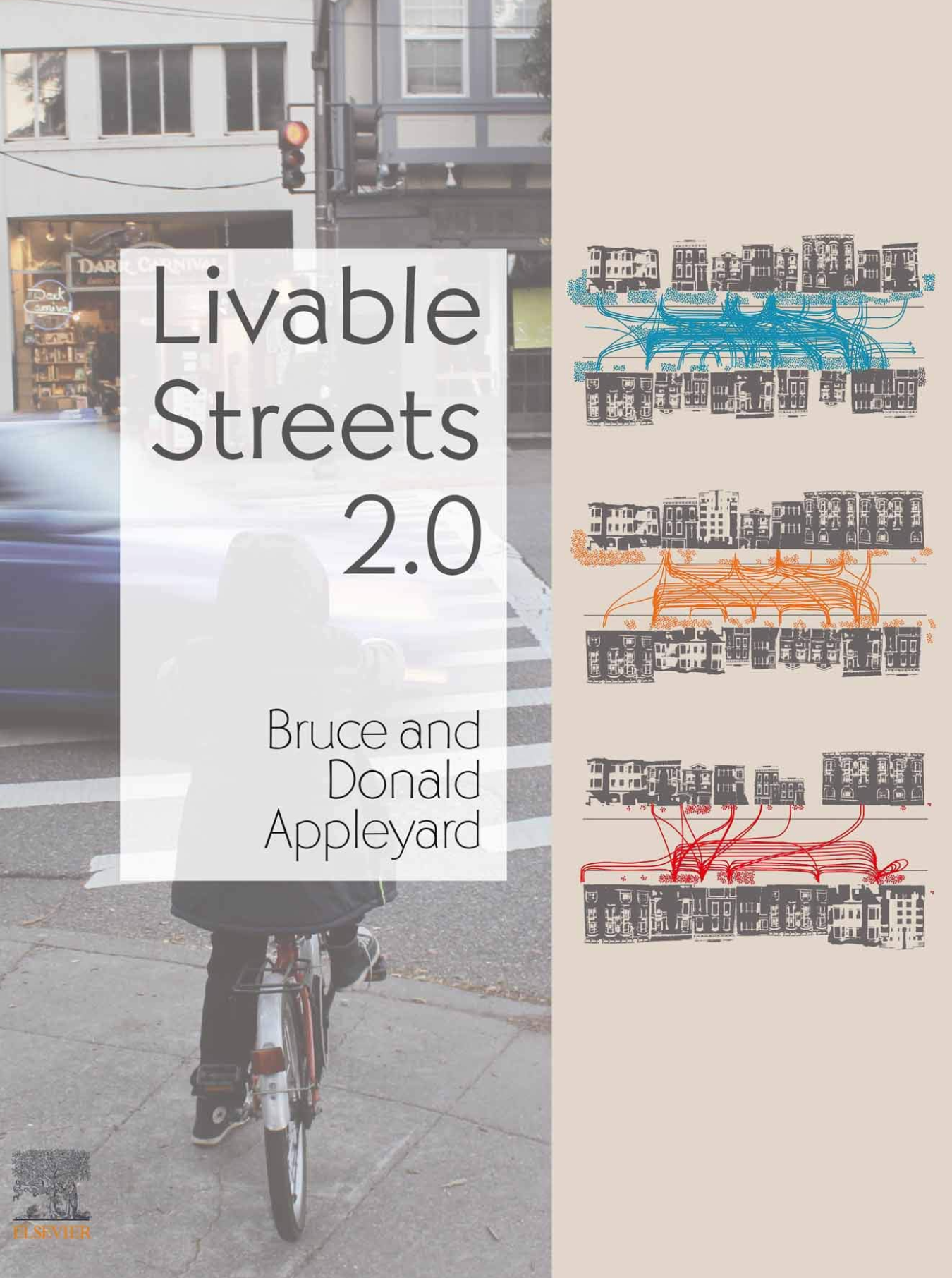
Livable Streets
Streets have become dangerous, unlivable environments, yet most people live on them. Streets need to be redefined as sanctuaries; as livable places; as communities; as resident territory; as places for play, greenery, and local history. Neighborhoods should be protected, though not to the point of being exclusionary. In Livable Streets, Donald Appleyard examines the neighborhood unit, the environmental area and the Woonerf as models for the protected neighborhood. The criteria for a protected neighborhood depend on acceptable speeds, volumes, noise levels, reduction of accidents, and rights-of-way for pedestrians.
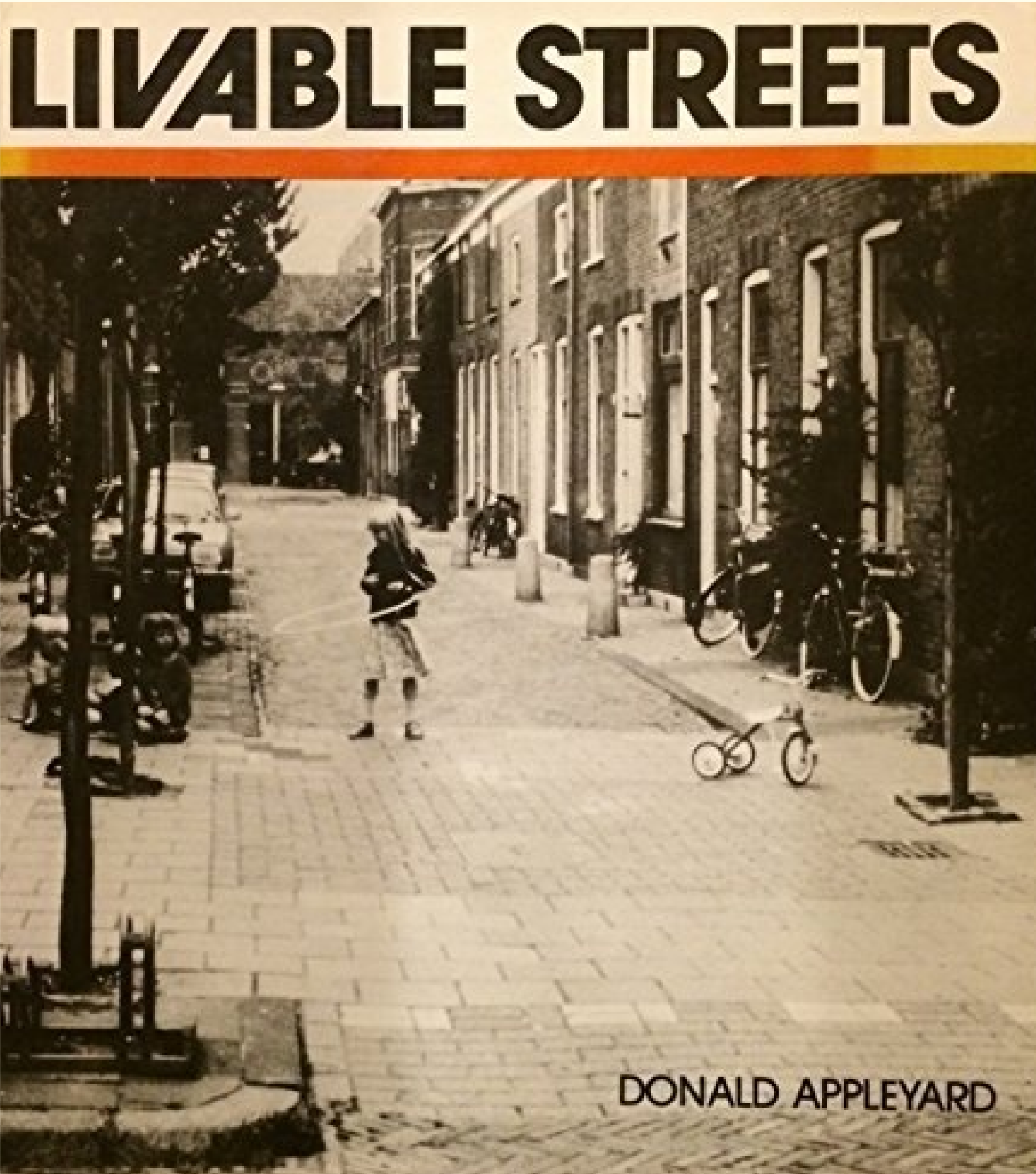
Man and the Modern City
No single view of American cities captures the many problems of urban life-whether the city is analyzed by a politician, an architect, an urban planner, a sociologist, or a psychologist. Man and the Modern City presents the view of ten distinguished urban critics whose variety of approaches places the crucial issues of the city in a broad perspective.
Edited by Elizabeth Green, Jeanne R. Lowe, and Kenneth Walker.
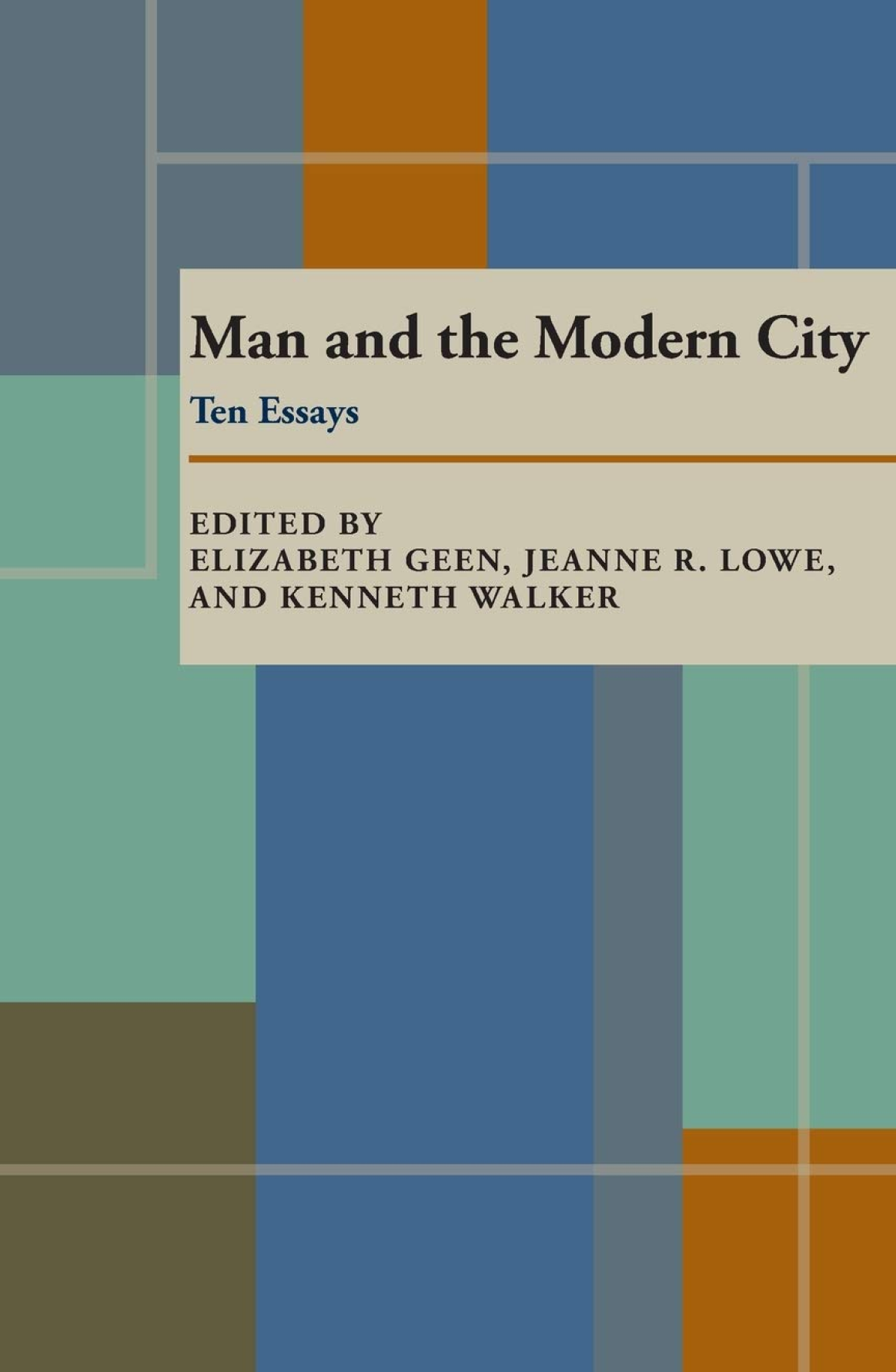
Design of Cities
In Design of Cities, Edmund N. Bacon relates historical examples to modern principles of urban planning. He vividly demonstrates how the work of great architects and planners of the past can influence subsequent development and be continued by later generations. By illuminating the historical background of urban design, Bacon also shows us the fundamental forces and considerations that determine the form of a great city. Perhaps the most significant of these are simultaneous movement systems—the paths of pedestrian and vehicular traffic, public and private transportation—that serve as the dominant organizing force, and Bacon looks at movement systems in cities such as London, Rome, and New York. He also stresses the importance of designing open space as well as architectural mass and discusses the impact of space, color, and perspective on the city-dweller. That the centers of cities should and can be pleasant places in which to live, work, and relax is illustrated by such examples as Rotterdam and Stockholm.
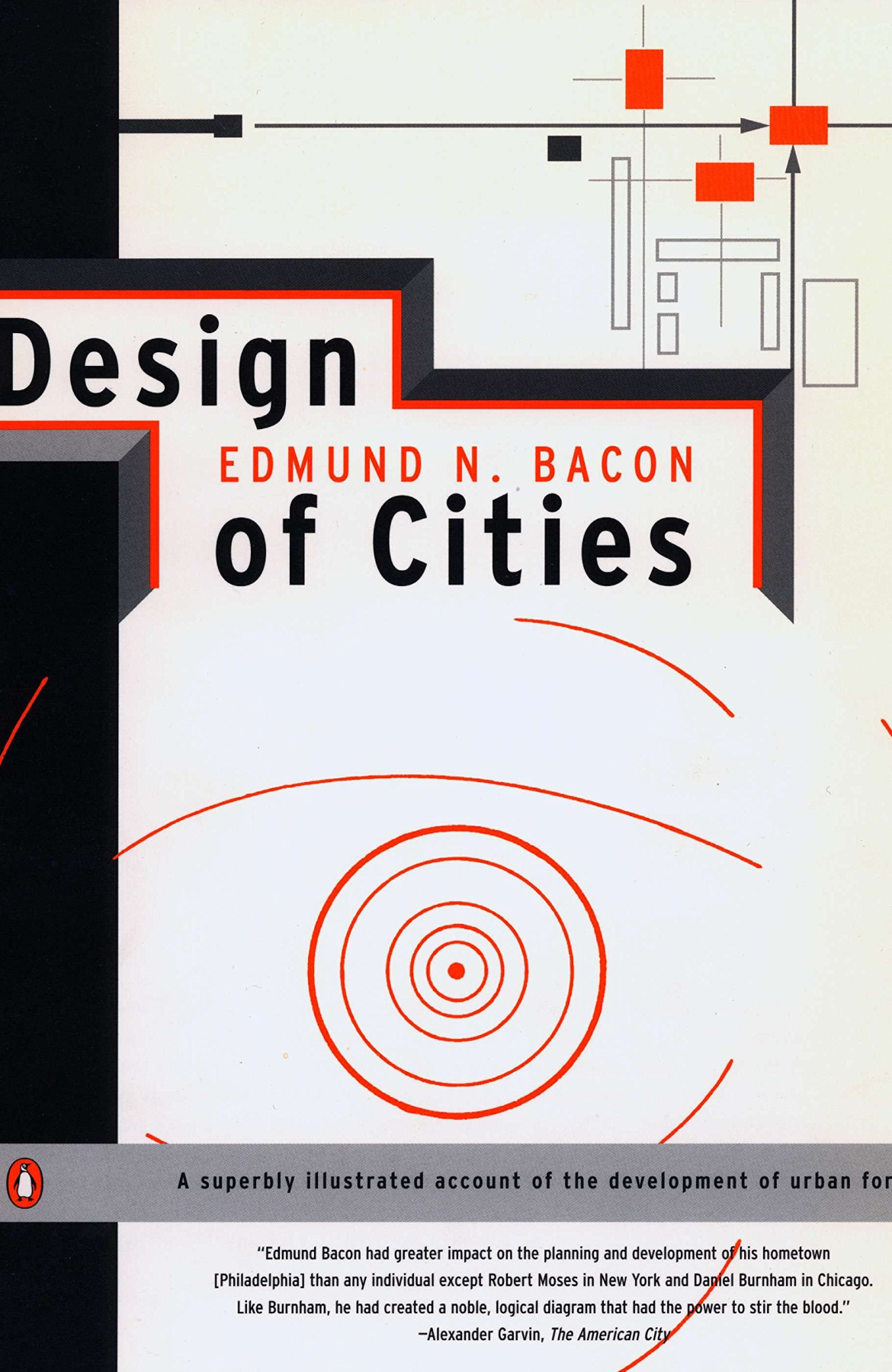
The Geography of Nowhere
In elegant and often hilarious prose, Kunstler depicts our nation’s evolution from the Pilgrim settlements to the modern auto suburb in all its ghastliness. The Geography of Nowhere tallies up the huge economic, social, and spiritual costs that America is paying for its car-crazed lifestyle. It is also a wake-up call for citizens to reinvent the places where we live and work, to build communities that are once again worthy of our affection. Kunstler proposes that by reviving civic art and civic life, we will rediscover public virtue and a new vision of the common good.

The City in Mind
In the highly acclaimed The Geography of Nowhere, James Howard Kunstler declared suburbia “a tragic landscape” and fueled a fierce debate over how we will live in twenty-first-century America. Here, Kunstler turns his discerning eye to urban life in America and beyond in dazzling excursions to classical Rome, the Aztec capital of Tenochtitlan, Louis-Napoleon’s Paris, the “gigantic hairball” that is contemporary Atlanta, the ludicrous spectacle of Las Vegas, and more. Seeking to discover what is constant and enduring in cities at their greatest, Kunstler explores how America got lost in suburban wilderness and locates pathways that might lead to civic revival. His authoritative tour is both a concise history of cities and a stunning critique of how they can aid or hinder social and civil progress. By turns dramatic and comic, The City in Mind is an exceptional glimpse into the urban condition.
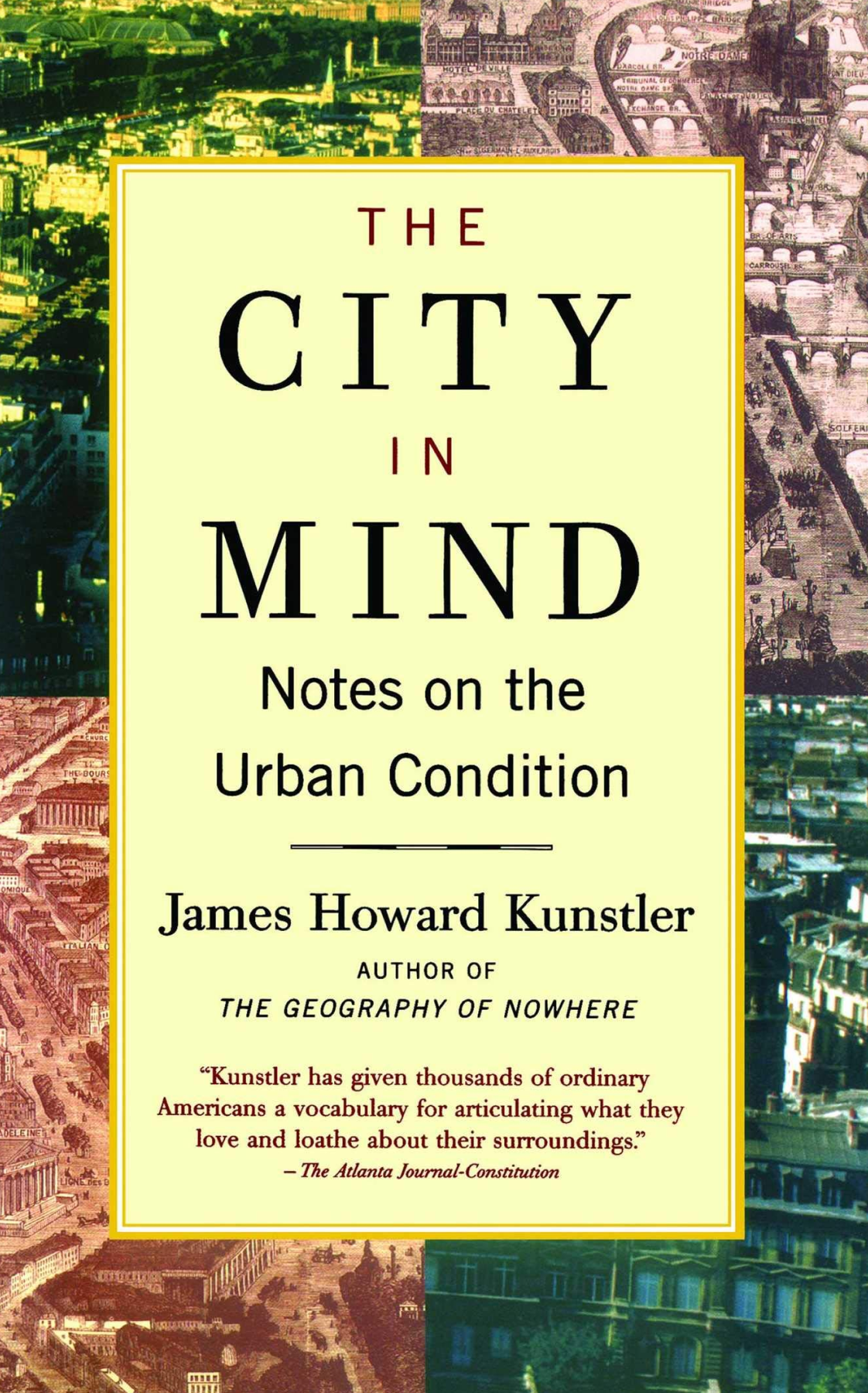
Once in a Great City
In Once in a Great City, David Maraniss shows that before the devastating riot, before the decades of civic corruption and neglect, and white flight; before people trotted out the grab bag of rust belt infirmities and competition from abroad to explain Detroit’s collapse, one could see the signs of a city’s ruin. Detroit at its peak was threatened by its own design. It was being abandoned by the new world economy and by the transfer of American prosperity to the information and service industries. In 1963, as Maraniss captures it with power and affection, Detroit summed up America’s path to prosperity and jazz that was already past history.
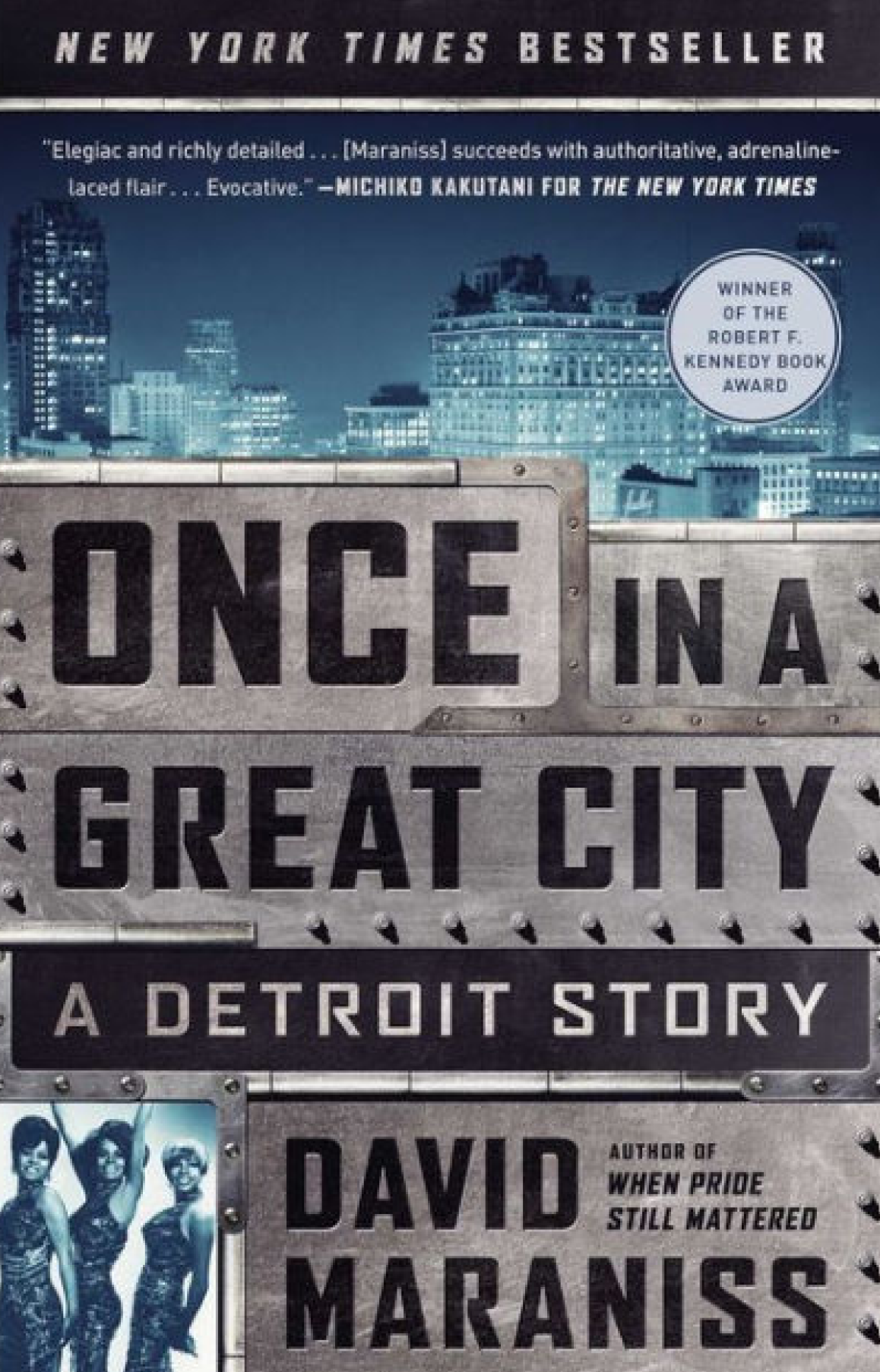
What Amsterdam can teach other cities about connecting people
Cornelia Dinca shares the idea of leveraging the power of digital connectivity to make urban functions more effective. By providing examples within the city of Amsterdam, Cornelia invigorates her plea for smart, human-connected cities.
Watch this TEDx talk on YouTube.

Open Source Urbanism & How to Recode Your City
According to Thomas Ermacora, for the past century we have designed cities mainly for cars and hinged our economies and communities on an unsustainable model of urbanization. By rebuilding the commons and using public facing architecture principles the speaker believes we can transform our neighborhoods collaboratively to become the thriving places they should be.
Watch this TEDx talk on YouTube.
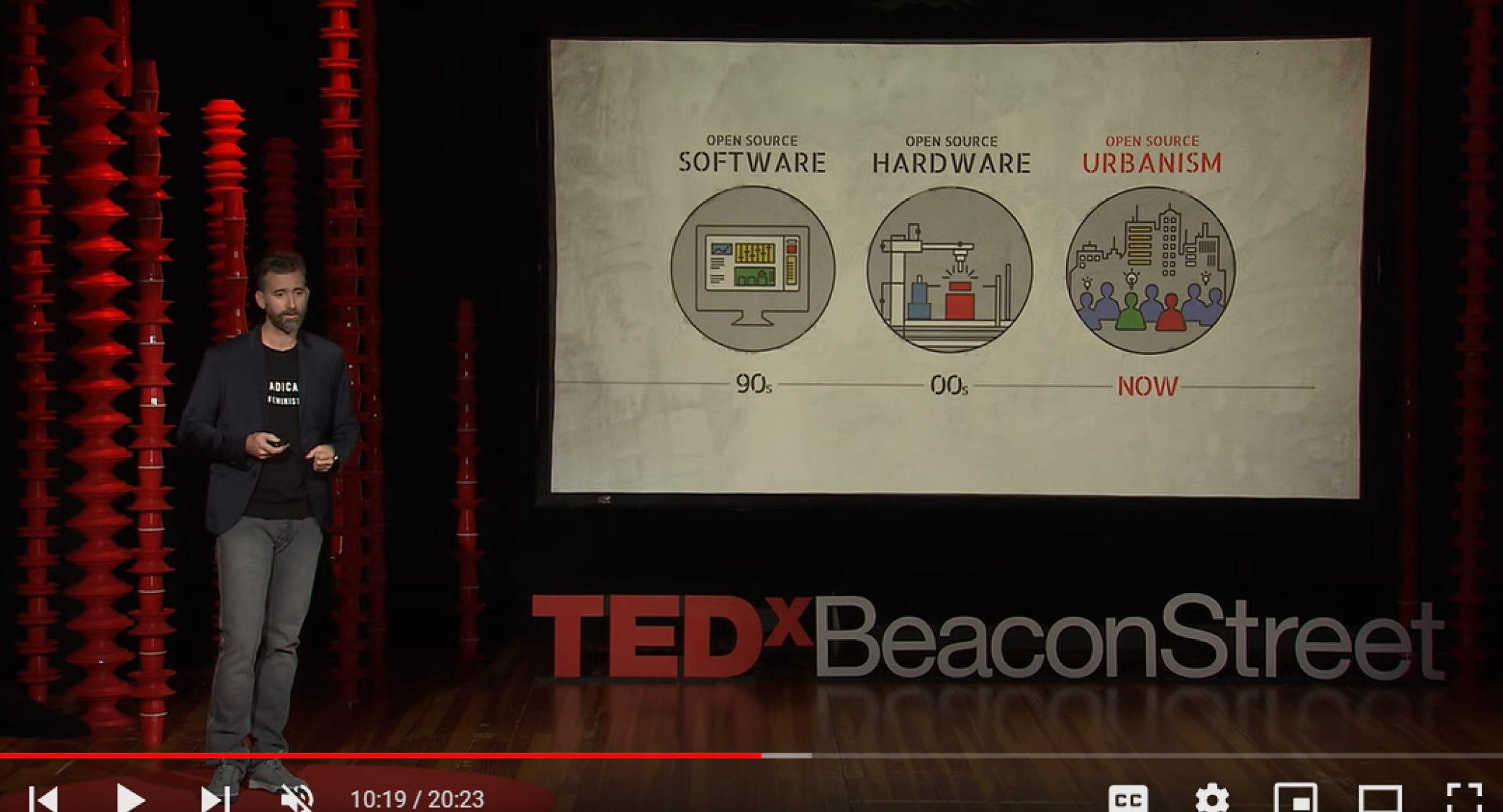
Urban Design for Successful Cities
As Chief Urban Designer for the City of New York, Alexandros Washburn understands one key thing about designing successful cities: it doesn’t work until it works for the pedestrian.
Watch this TEDx talk on YouTube.

The happy city experiment
Charles Montgomery explores what happens when you take an abandoned city space in NYC and populate it with urban social experiments. The outcomes are unexpected as city dwellers explore this public space, interact with each other, and change their attitudes towards social connections, values, and each other.
Watch this TEDx talk on YouTube.

We let kids design our city – here’s what happened
As adults, we think of kids as “future citizens.” Their ideas and opinions will matter someday, but not today — there must be a reason the voting age is 18, right? But kids make up 25% of the population — shouldn’t we include them in some important conversations? In this inspiring talk, urban planner Mara Mintzer wonders what would happen if we let children design our cities.
Watch this TEDx talk on YouTube.
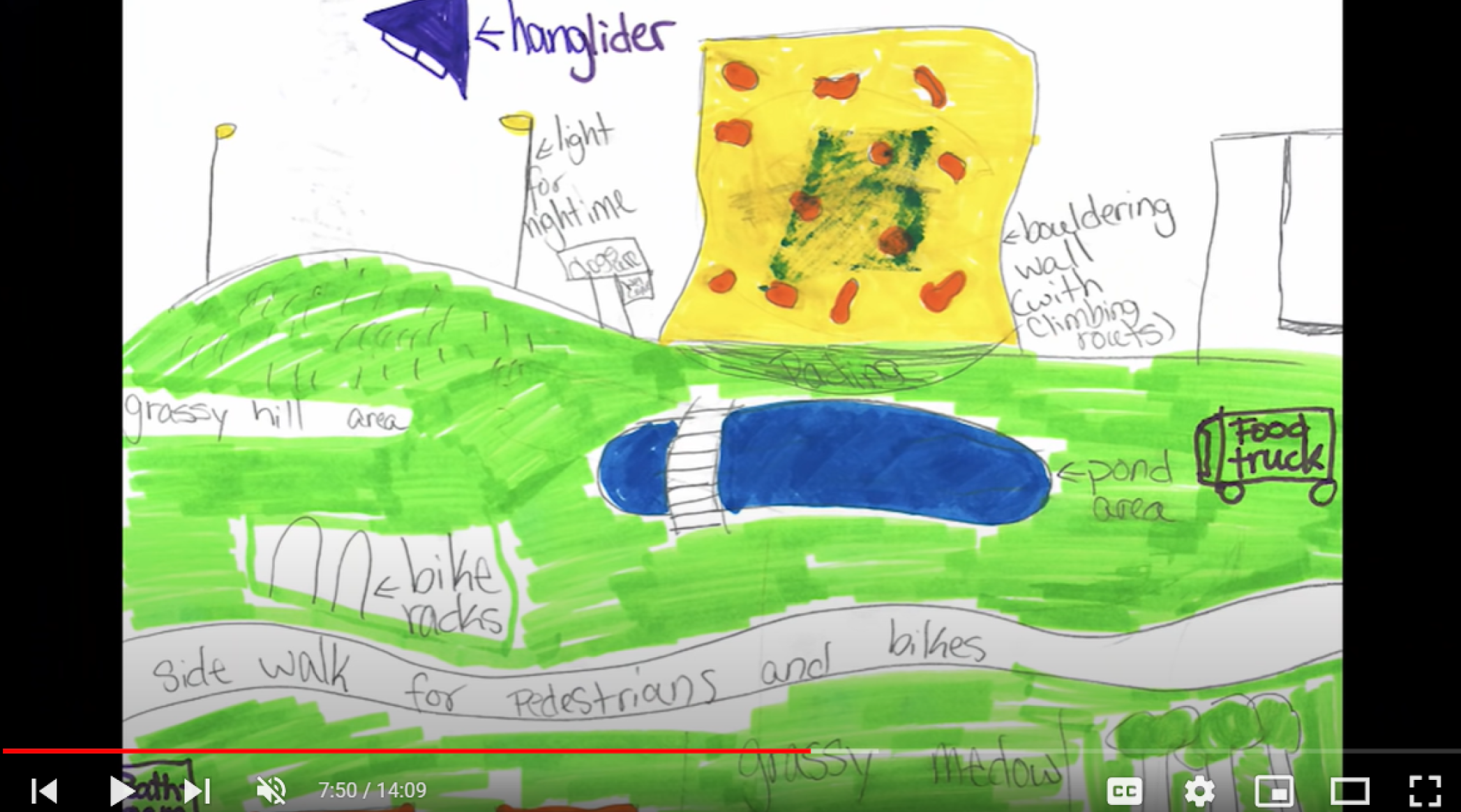
Social Infrastructure
World-renown architect Bjarke Ingels shares his process and projects in this light and thoughtful TEDx talk.
Watch it on YouTube.
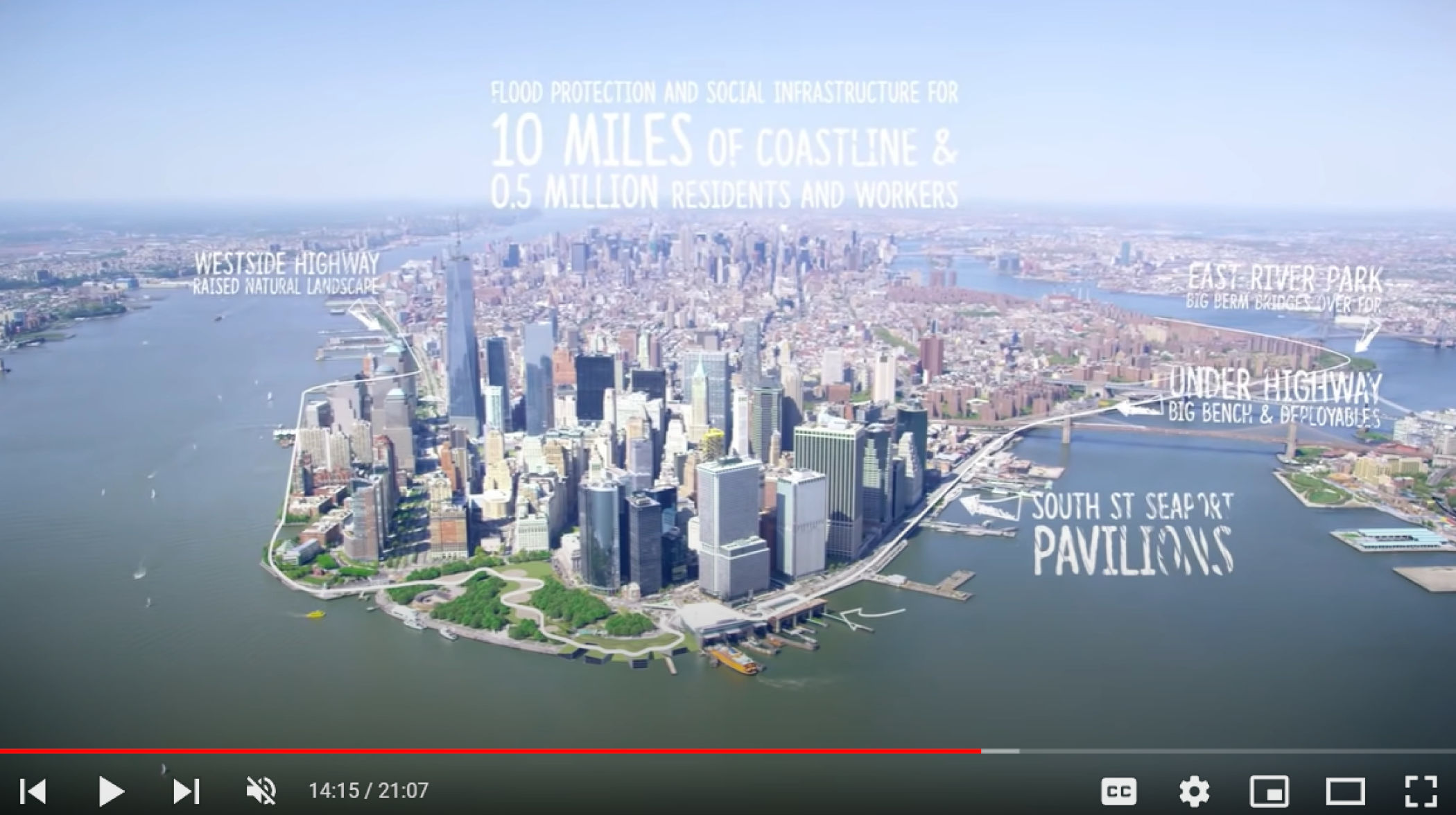
Designing playgrounds for happier, healthier kids
Sarah Konradi is a landscape architect working at the intersection of design, conservation, and health. As Program Director of the National Wildlife Federation’s Early Childhood Health Outdoors program, Sarah works with underserved communities to re-envision outdoor spaces used by children and families, creating playgrounds that support child development and connection to the natural world.
Watch this TEDx talk on YouTube.
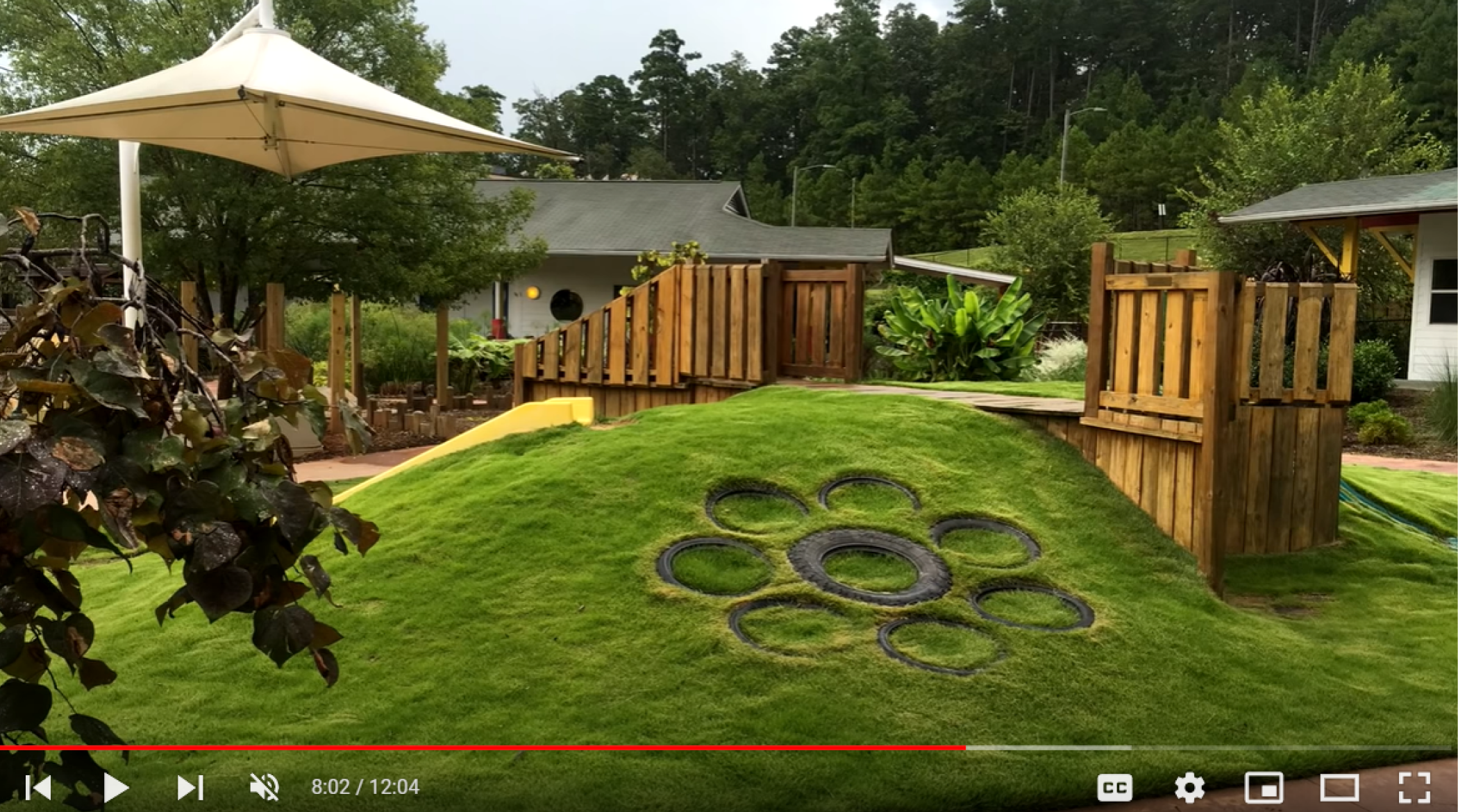
Bicycle Culture by Design
Mikael Colville-Andersen is an urban mobility expert and CEO for Copenhagenize Consulting. He is often called Denmark’s Bicycle Ambassador but he has learned the hard way that this title is a dismal pick-up line in bars. Colville-Andersen and his team advise cities and towns around the world regarding bicycle planning, infrastructure and communication strategies. He applies his marketing expertise to campaigns that focus on selling bicycle culture and bicycle transport to a mainstream audience as opposed to the existing cycling sub-cultures in particular with his famous Cycle Chic brand. Colville-Andersen gives talks around the world about bicycle culture, design and social media.
Watch this TEDx talk on YouTube.
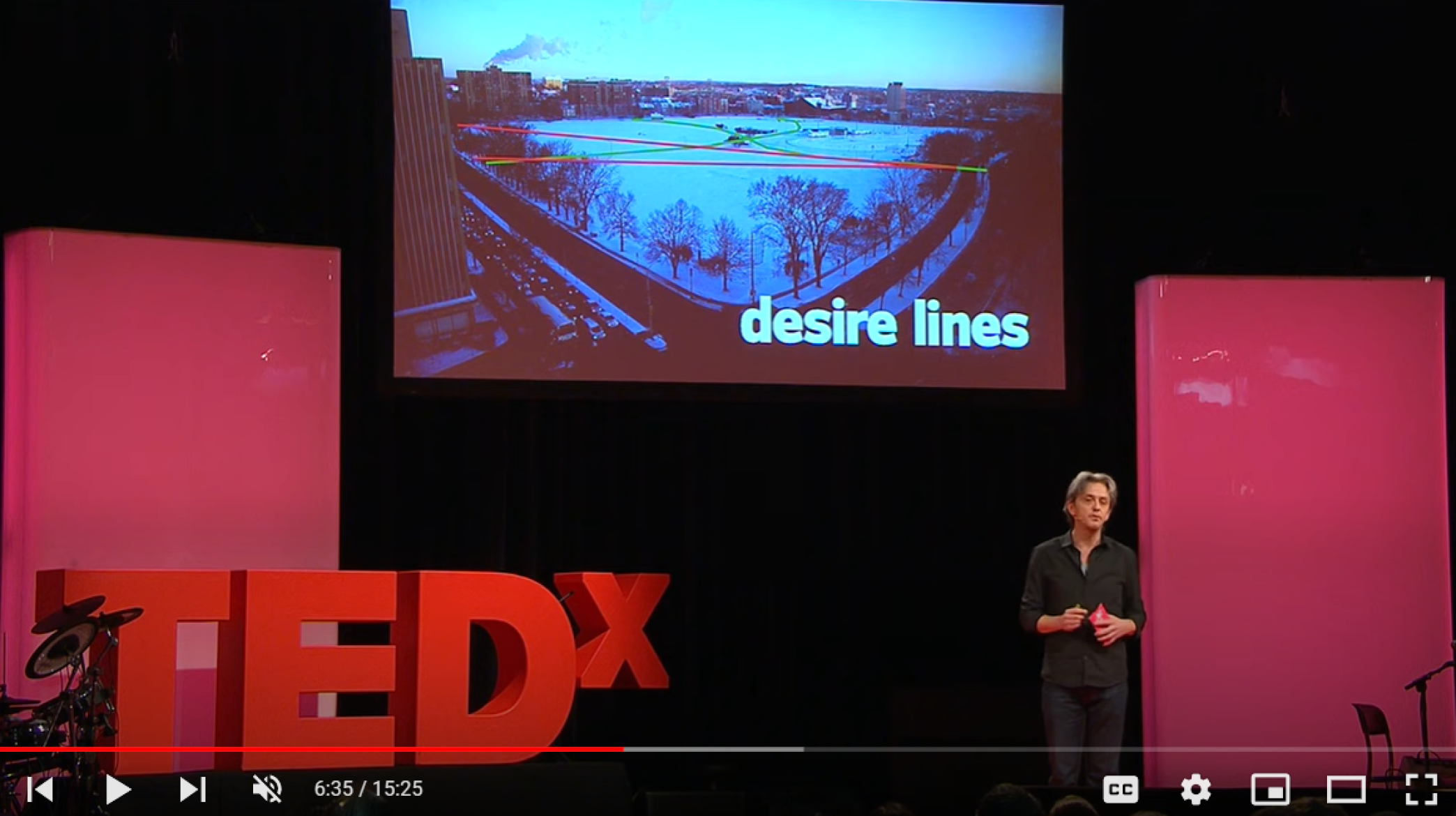
The Life-Sized City
“Somewhere in there, in the dark shadow of the Cult of Big, behind the mountain of obsessive growth, there is a lovely little place called the Life-Sized City. In the Life-Sized City, things are different.” – Urban designer Mikael Colville-Andersen takes us on a journey back to the future. A future that can be rational, with cities that can be better than they have been for 70 years. It all starts with The Life-Sized City and rejecting the Cult of Big.
Watch this TEDx talk on YouTube.
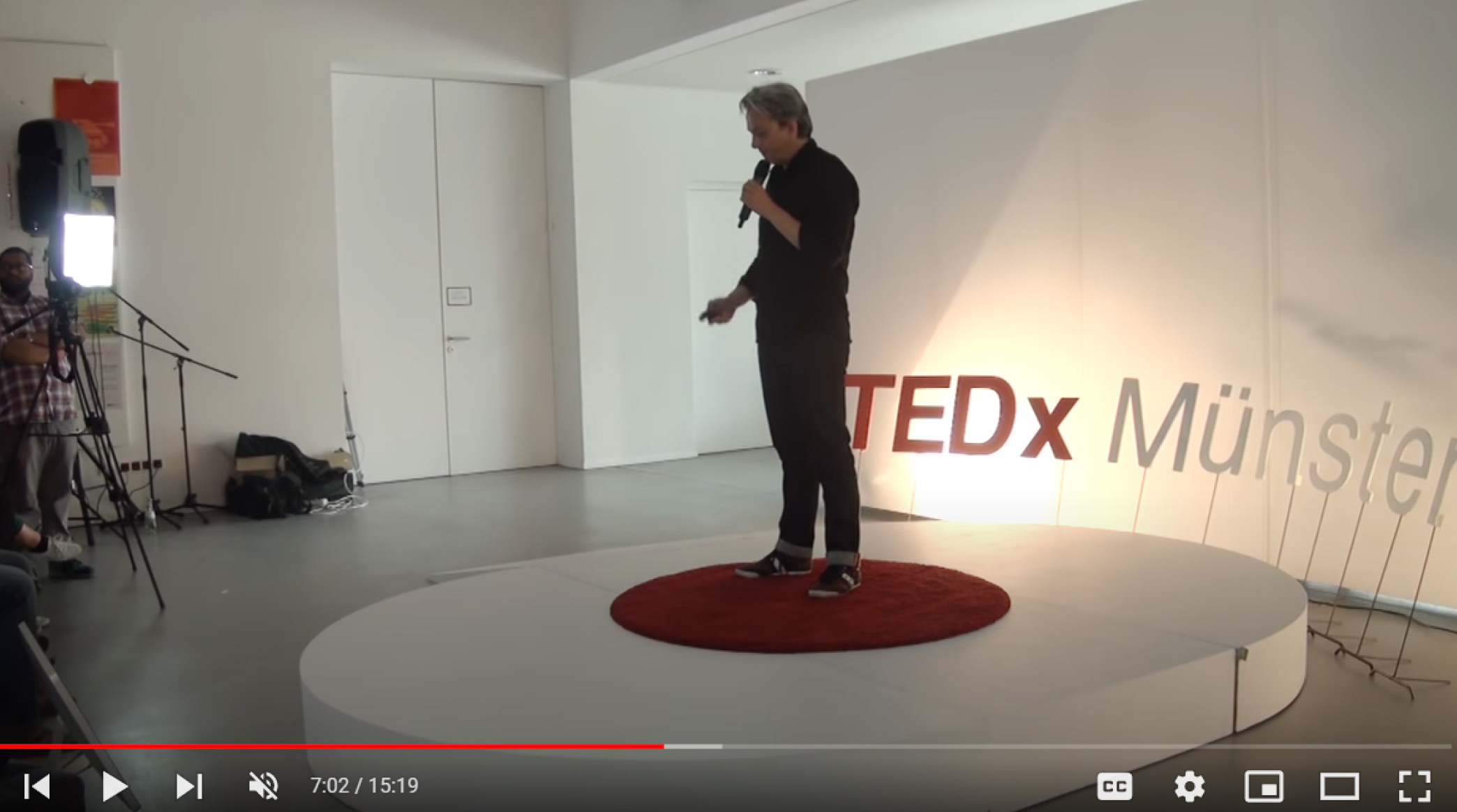
Add some magic to a public space near you
Every human has a deep longing for home and a sense of place. But home is not where many people think it is, because home is a feeling – not a location. David Engwicht is a place maker and founder of Creative Communities International, a social innovation incubator. The son of an itinerant gospel preacher, David grew up on the fringes with no sense of place. He shares his secrets for helping ordinary citizens add magic and soul to the public spaces in their neighborhood or town center.
Watch this TEDx talk on YouTube.
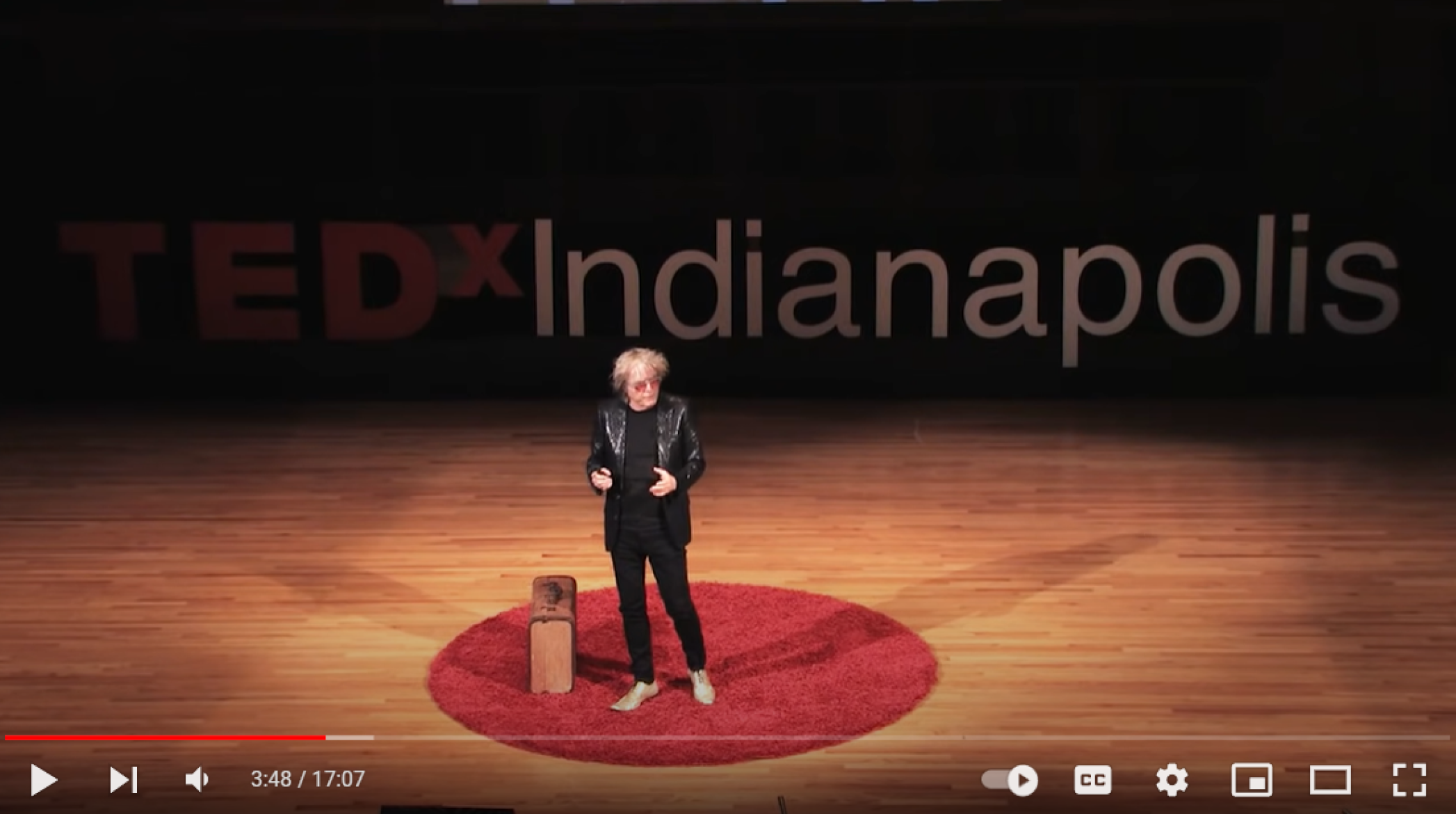
The architectural mastermind behind modern Singapore
Cities designed like families can last for generations. Skeptical? Look to master architect Liu Thai Ker, who transformed Singapore into a modern marvel with his unique approach to sustainable urban design. Liu shares creative wisdom and perspective on how marrying a humanist heart, a scientific mind and an artistic eye creates a resilient marriage of form and function. A talk that both humbles and inspires.
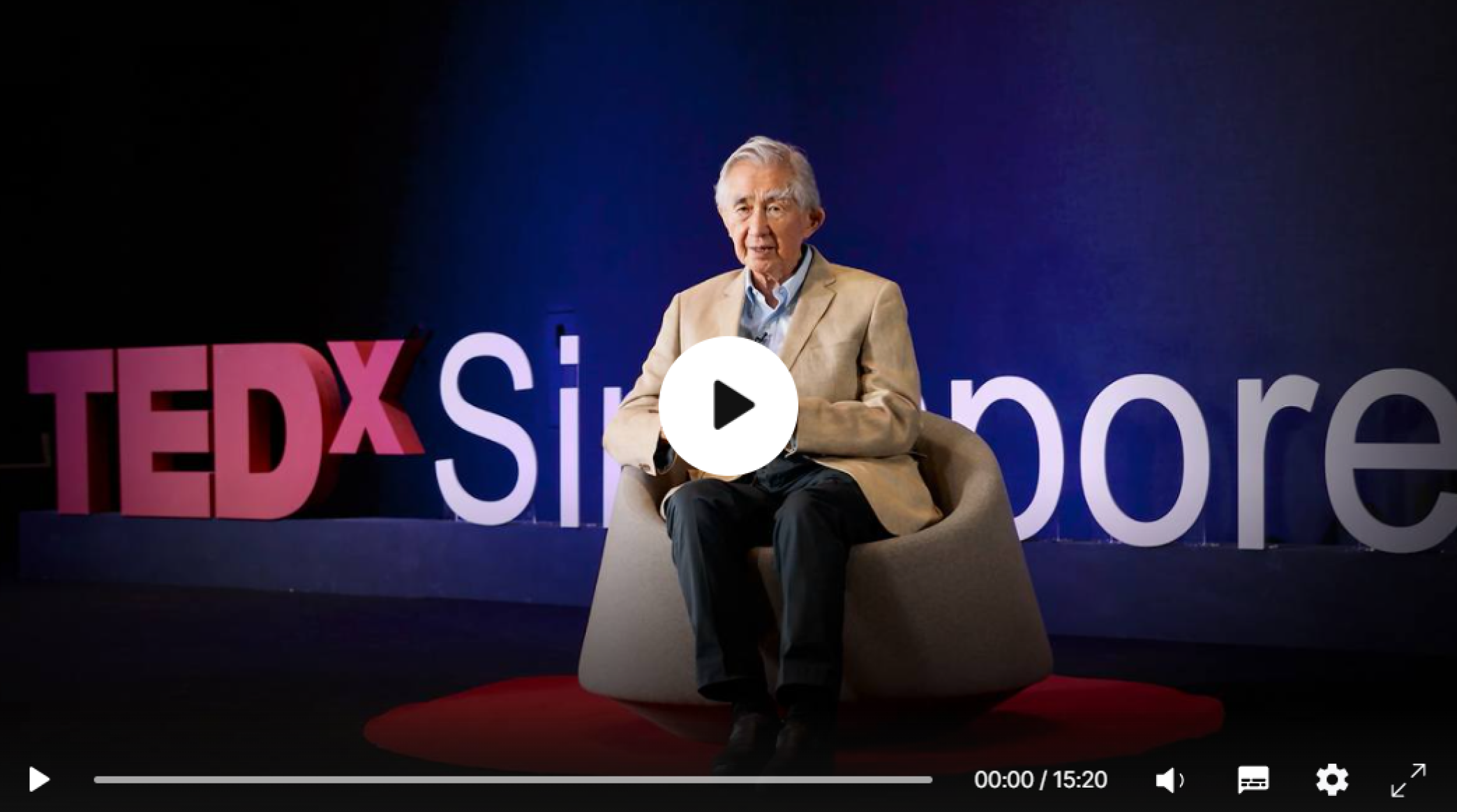
Segregation by Design
Segregation by Design is a personal project of Adam Paul Susaneck, an NYC-based architect.
Using historic aerial photography, this ongoing project aims to document the destruction of communities of color due to red-lining, “urban renewal,” and freeway construction. Through a series of stark aerial before-and-after comparisons, figure-ground diagrams, and demographic data, this project will reveal the extent to which the American city was methodically hollowed out based on race. The project will cover the roughly 180 municipalities which received federal funding from the 1956 Federal Highway Act, which created the interstate highway system.

Placemaking With Children And Youth
From a history of children’s rights to case studies discussing international initiatives that aim to create child-friendly cities, Placemaking with Children and Youth offers comprehensive guidance in how to engage children and youth in the planning and design of local environments. It explains the importance of children’s active participation in their societies and presents ways to bring all generations together to plan cities with a high quality of life for people of all ages. Not only does it delineate best practices in establishing programs and partnerships, it also provides principles for working ethically with children, youth, and families, paying particular attention to the inclusion of marginalized populations.
By Victoria Derr, Louise Chawla, and Mara Mintzer.
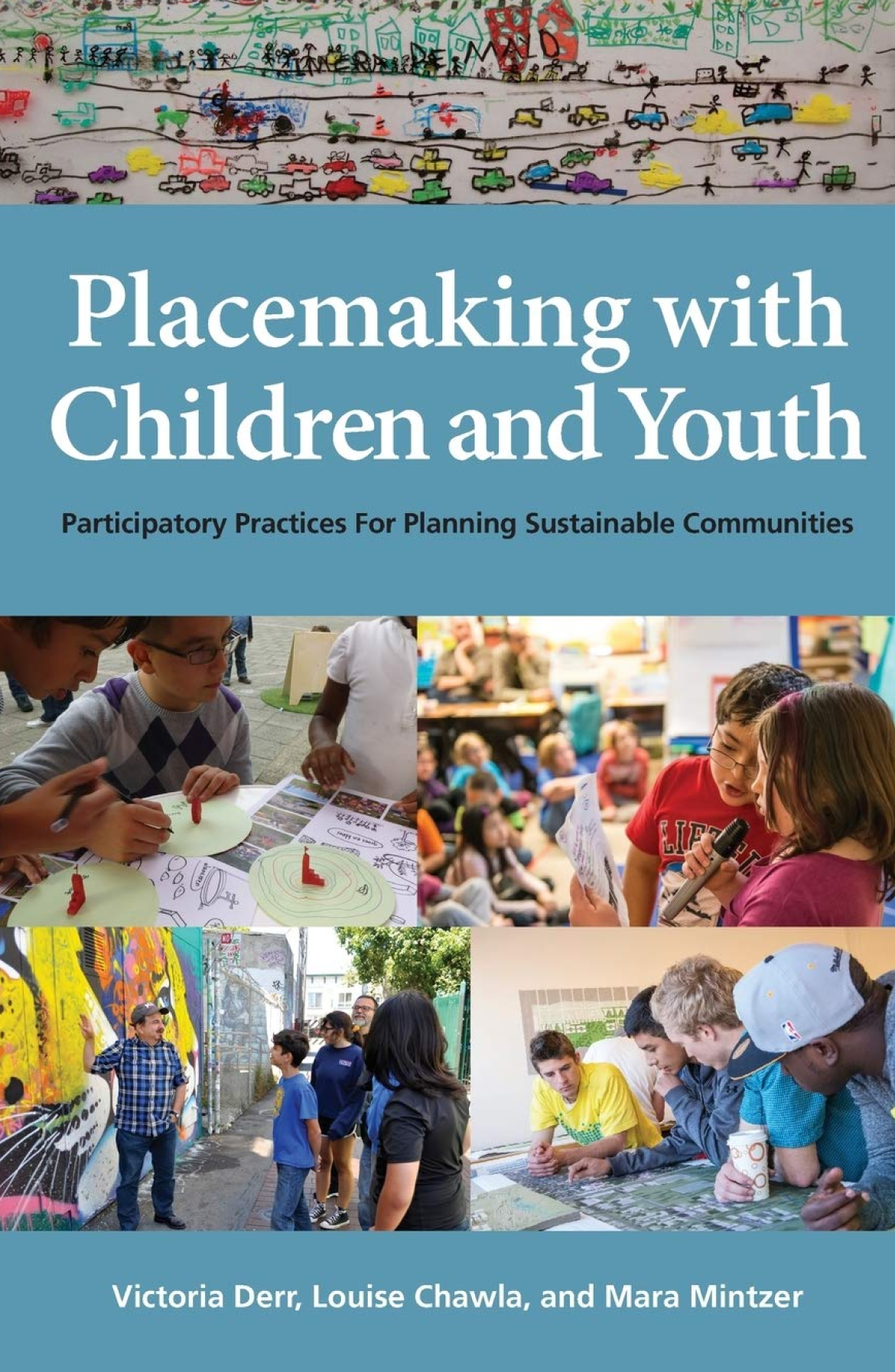
Life Between Buildings
“This book will have a lasting influence on the future quality of public open spaces. By helping us better understand the larger public life of cities, Life Between Buildings can only move us toward more lively and healthy public places. Buy this book, find a comfortable place to sit in a public park or plaza, begin reading, look around. You will be surprised at how you will start to see (and design) the world differently.”
—Landscape Architecture
By Jan Gehl.
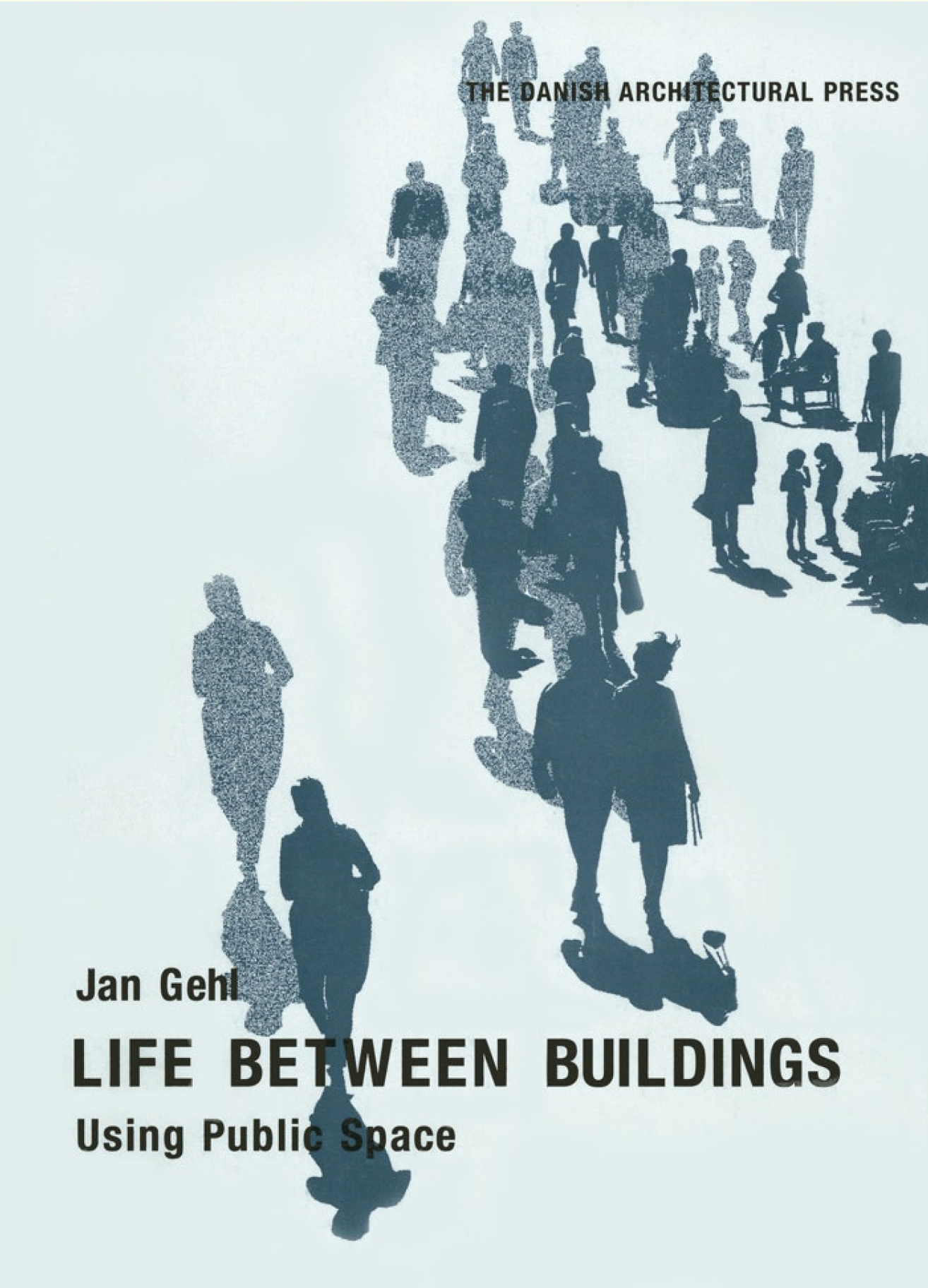
Happy City
A globe-trotting, eye-opening exploration of how cities can—and do—make us happier people Charles Montgomery’s Charles Montgomery’s Happy City is revolutionizing the way we think about urban life.
After decades of unchecked sprawl, more people than ever are moving back to the city. Dense urban living has been prescribed as a panacea for the environmental and resource crises of our time. But is it better or worse for our happiness? Are subways, sidewalks, and condo towers an improvement on the car dependence of the suburbs?
The award-winning journalist Charles Montgomery finds answers to such questions at the intersection between urban design and the emerging science of happiness, during an exhilarating journey through some of the world’s most dynamic cities. He meets the visionary mayor who introduced a “sexy” bus to ease status anxiety in Bogotá; the architect who brought the lessons of medieval Tuscan hill towns to modern-day New York City; the activist who turned Paris’s urban freeways into beaches; and an army of American suburbanites who have hacked the design of their own streets and neighborhoods.
Rich with new insights from psychology, neuroscience, and Montgomery’s own urban experiments, Happy City reveals how cities can shape our thoughts as well as our behavior. The message is ultimately as surprising as it is hopeful: by retrofitting cities and our own lives for happiness, we can tackle the urgent challenges of our age. The happy city can save the world—and we can all help build it.
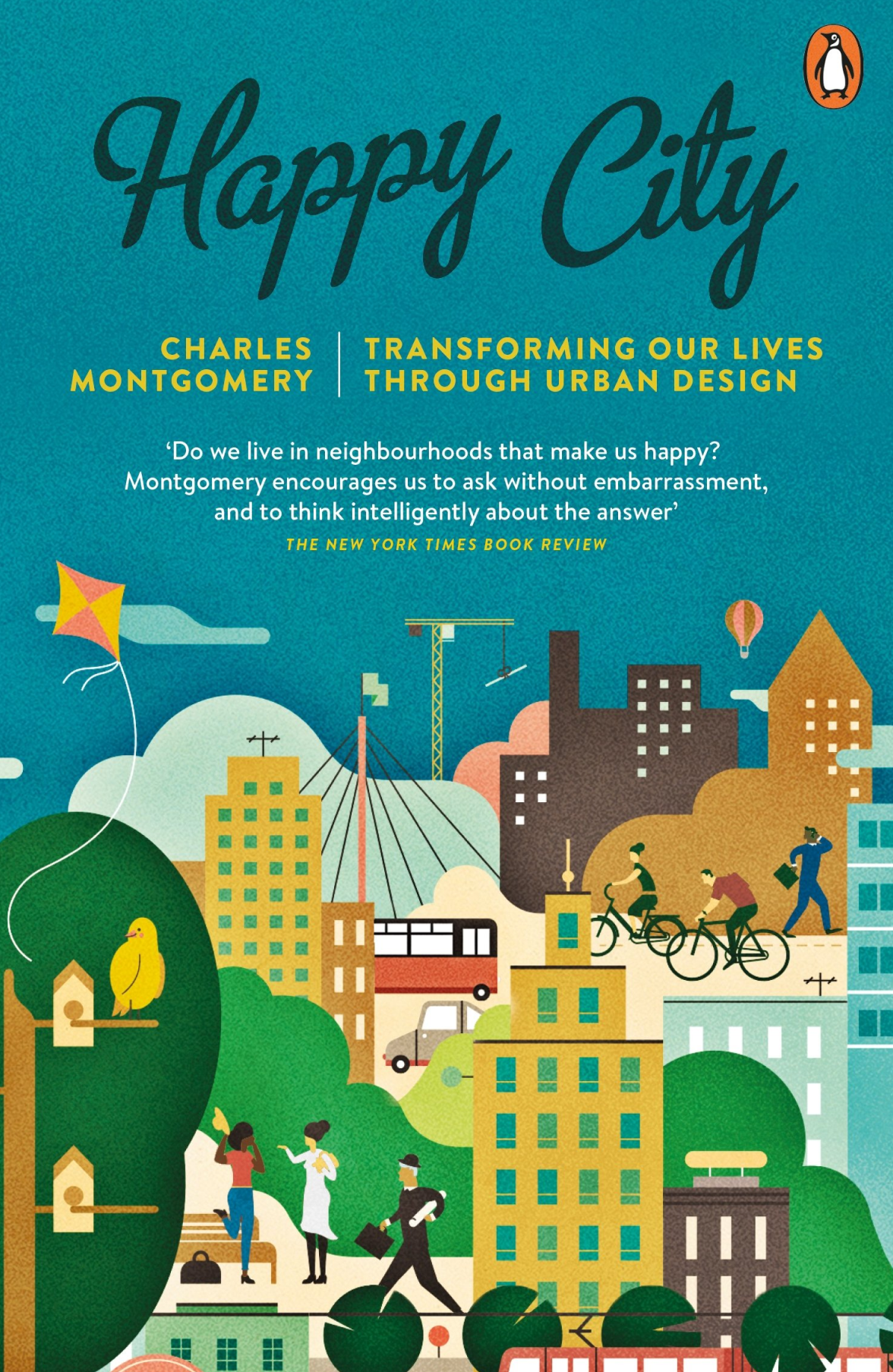
The Walkable City
The Walkable City looks at how the architectural evolution of four major cities changed the lives of ordinary citizens, examines the influence of George Haussman and Jane Jacobs on city planning, and explores current ideas for transforming cities into friendly environments for pedestrians.

16 Acres (2012)
The rebuilding of ground zero is one of the most architecturally, politically, and emotionally complex urban renewal projects in American history. From the beginning, the effort has been fraught with controversy, delays and politics. The struggle has encompassed eleven years, nineteen government agencies, a dozen projects and over $20 billion.
Aside from the staggering engineering challenges of the site itself, a major complicating factor in the rebuilding of the World Trade Center is the sheer number of interested parties. Politicians, developers, architects, insurance companies, local residents, and relatives of 9/11 victims all profess a claim to the site and are often in conflict with one another. According to The New York Times, “Where some saw lucrative real estate, others saw a graveyard. Where some saw Rockefeller Center or Lincoln Center or Grand Central Terminal, others saw Gettysburg.”
What was once ground zero is now a frenzied construction site. Three thousand workers are building four of the tallest skyscrapers in America, an iconic – and complicated – train station, a performing arts center and a sacred memorial and museum. What will emerge in downtown Manhattan over the next few years will redefine the city – and the country – for generations.
16 Acres is the story of how and why this historic project got built. At the heart of the story is the dramatic tension between noblest intentions, the desire of everyone involved to “get it right,” and the politics, hubris, ego and ideology that is the bedrock of New York City. What does it say about us as New Yorkers, as Americans?
As with all great urban projects, from the Pyramids to Rome’s Colosseum to Rockefeller Center, a small group of powerful people will dictate the outcome. With inside access to the project and these key players, 16 Acres tells the story behind the headlines. Who are these men and women? What motivates them? How will their personalities shape the project? And, ultimately, will it succeed? The film also follows the dramatic rush to complete the memorial in time, and the key players as they prepare to converge on the site for the10th anniversary.
Produced by Richard Hankin.
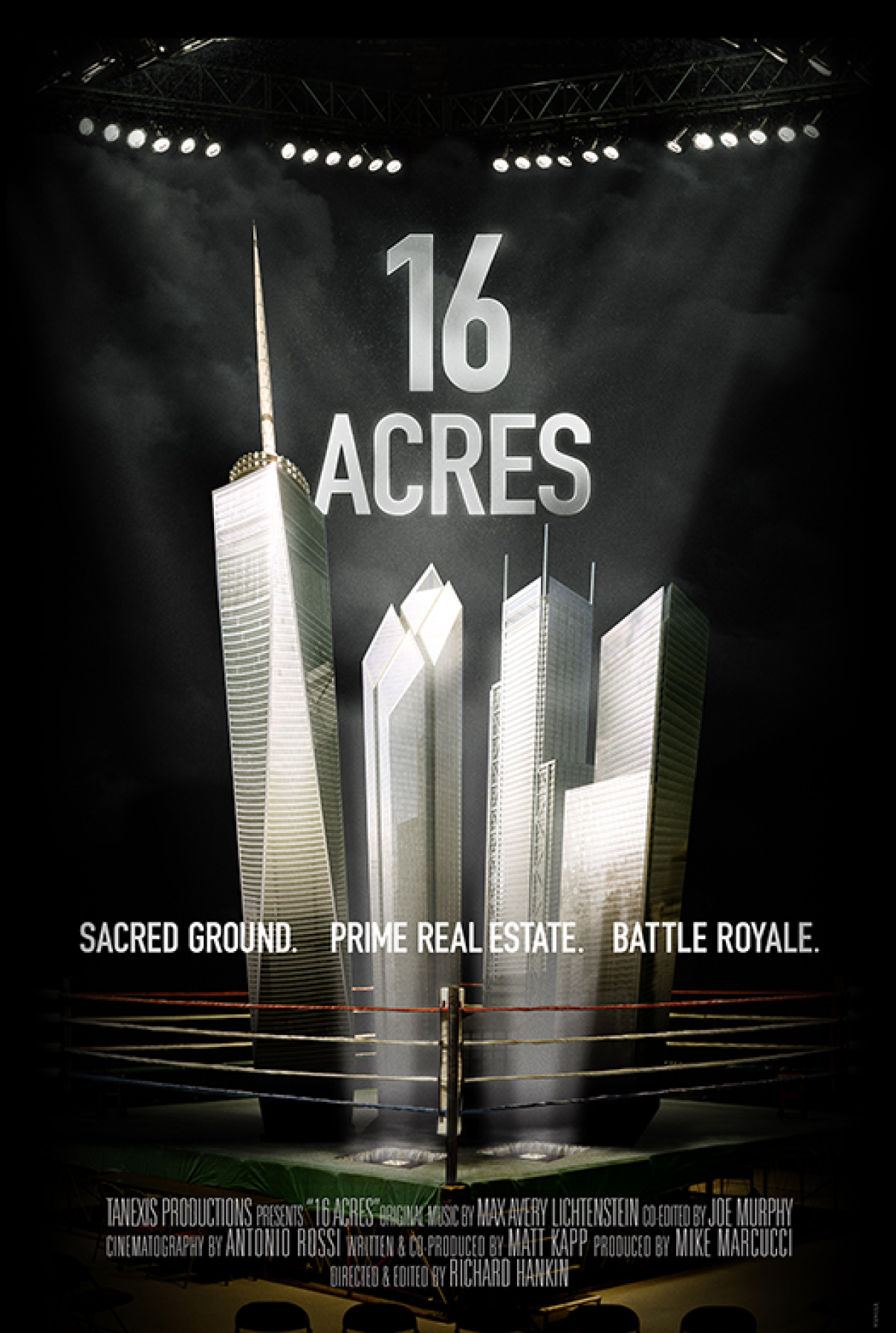
The High Cost of Free Parking
In The High Cost of Free Parking, Donald Shoup argues that free parking has contributed to auto dependence, rapid urban sprawl, extravagant energy use, and a host of other problems. Planners mandate free parking to alleviate congestion but end up distorting transportation choices, debasing urban design, damaging the economy, and degrading the environment. Ubiquitous free parking helps explain why our cities sprawl on a scale fit more for cars than for people, and why American motor vehicles now consume one-eighth of the world’s total oil production. But it doesn’t have to be this way. Shoup proposes new ways for cities to regulate parking – namely, charge fair market prices for curb parking, use the resulting revenue to pay for services in the neighborhoods that generate it, and remove zoning requirements for off-street parking. Such measures, according to the Yale-trained economist and UCLA planning professor, will make parking easier and driving less necessary.

Making Transit Fun!
Why do people in Stockholm prefer to take the stairs over the escalator? Why do Londoners enjoy hanging out at bus stops? How do carmakers convince us to buy gas-guzzling, environmentally damaging, and wallet-draining machines? It’s called the fun theory. What Darrin Nordahl illustrates in this delightful book is that transit can be just as inviting, exciting, and even seductive as the automobile, if designed with the passenger experience in mind.
In Making Transit Fun!, Nordahl shows that with the help of architects, urban designers, graphic artists, industrial engineers, marketing experts-and even fashion designers-we can lure people out of their automobiles and toward healthier, more sustainable methods of transportation.
This accessible E-ssential focuses on the possibilities for making public transit, cycling, and walking more appealing to the motorist. In each section, Nordahl demonstrates how the transit stigma can be overcome with innovative design. From the aesthetics of buses to segregated bike lanes and pedestrian-priority streets, Nordahl showcases examples from around the world that excite the heart and bring an easy smile.
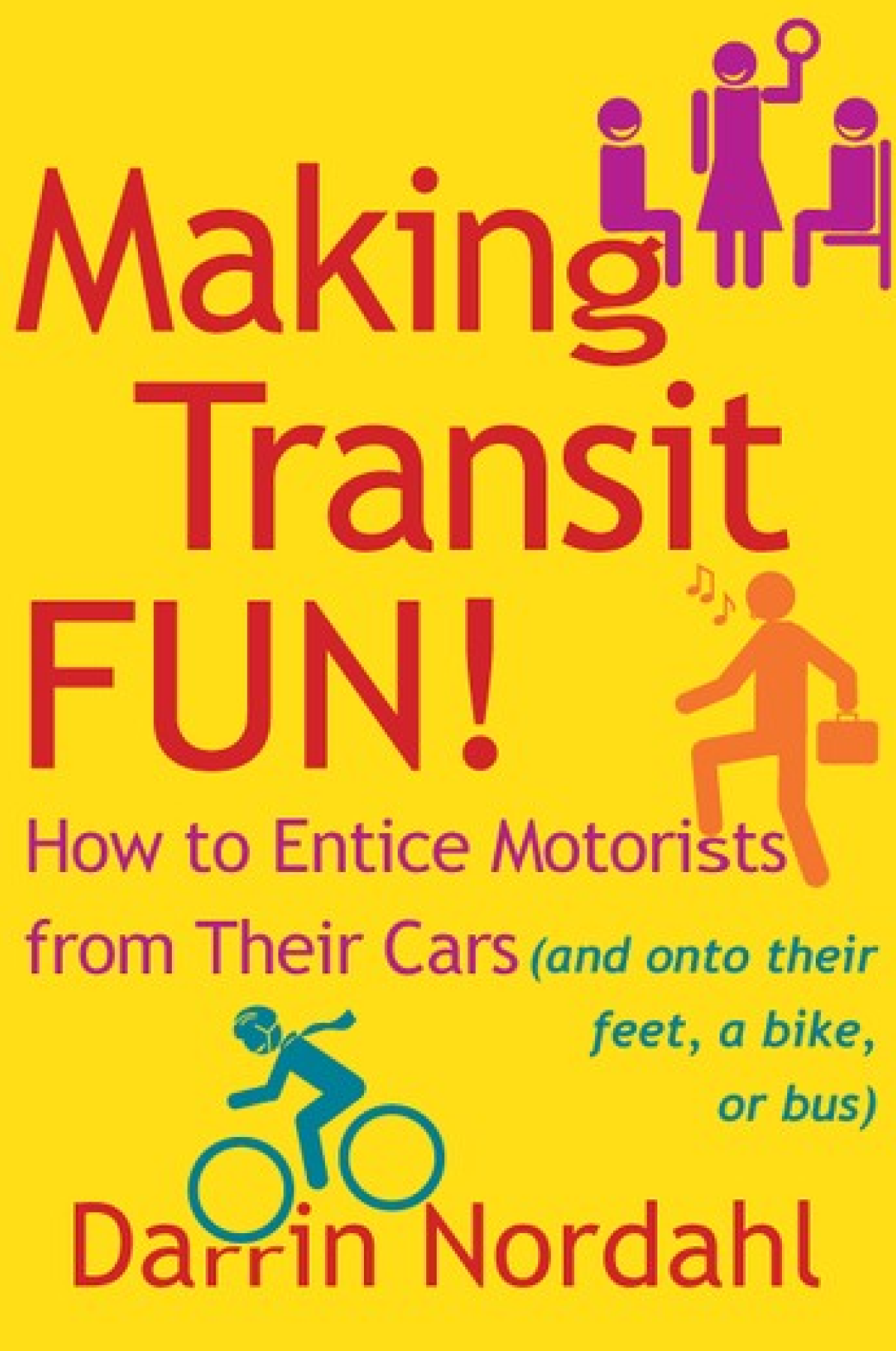
The Boulevard Book
First built in Europe and grandly imported to the United States in the mid-nineteenth century, the classic multiway boulevard has been in decline for many years, victim of a narrowly focused approach to street design that views unencumbered vehicular traffic flow as the highest priority. The American preoccupation with destination and speed has made multiway boulevards increasingly rare as artifacts of the urban landscape. This book reintroduces the boulevard, tree-lined and with separate realms for through traffic and for slow-paced vehicular-pedestrian movement, as an important and often crucial feature of both historic and contemporary cities. It presents more than fifty boulevards—as varied as Avenue Montaigne, in Paris; C. G. Road, in Ahmedabad, India; and The Esplanade, in Chico, California—celebrating their usefulness and beauty. It discusses their history and evolution, the misconceptions that led to their near-demise in the United States, and their potential as a modern street type.
Based on wide research, The Boulevard Book examines the safety of these streets and offers design guidelines for professionals, scholars, and community decision makers. Extensive plans, cross sections, and perspective drawings permit visual comparisons. The book shows how multiway boulevards respond to many issues that are central to urban life, including livability, mobility, safety, interest, economic opportunity, mass transit, and open space.
Written by Allan B. Jacobs, Elizabeth McDonald, and Yodan Rofe.
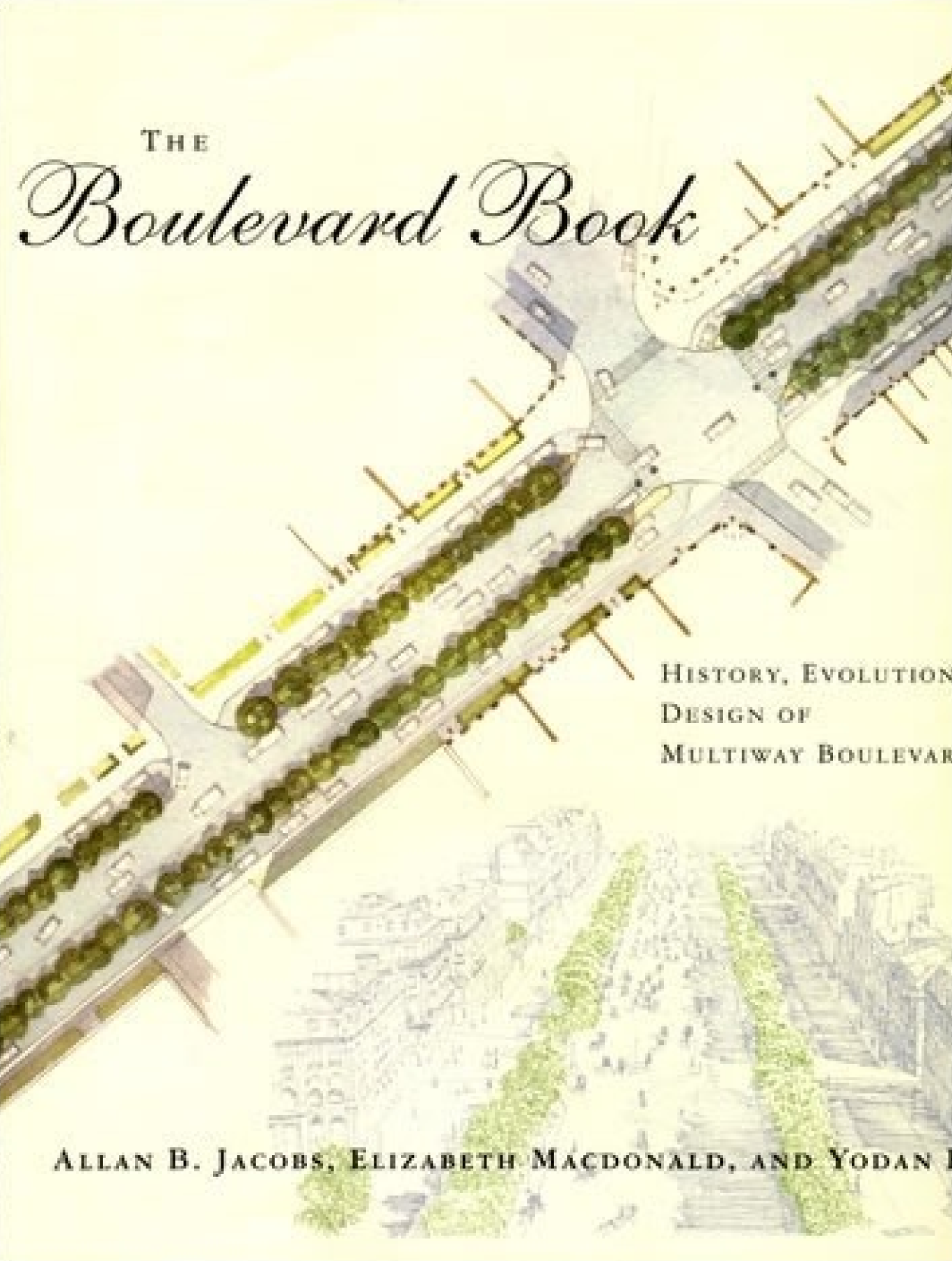
Curbed
Curbed is an American real estate and urban design website founded as a blog by Lockhart Steele in 2006. The full website, founded in 2010, featured sub-pages dedicated to specific real estate markets and metropolitan areas across the United States.
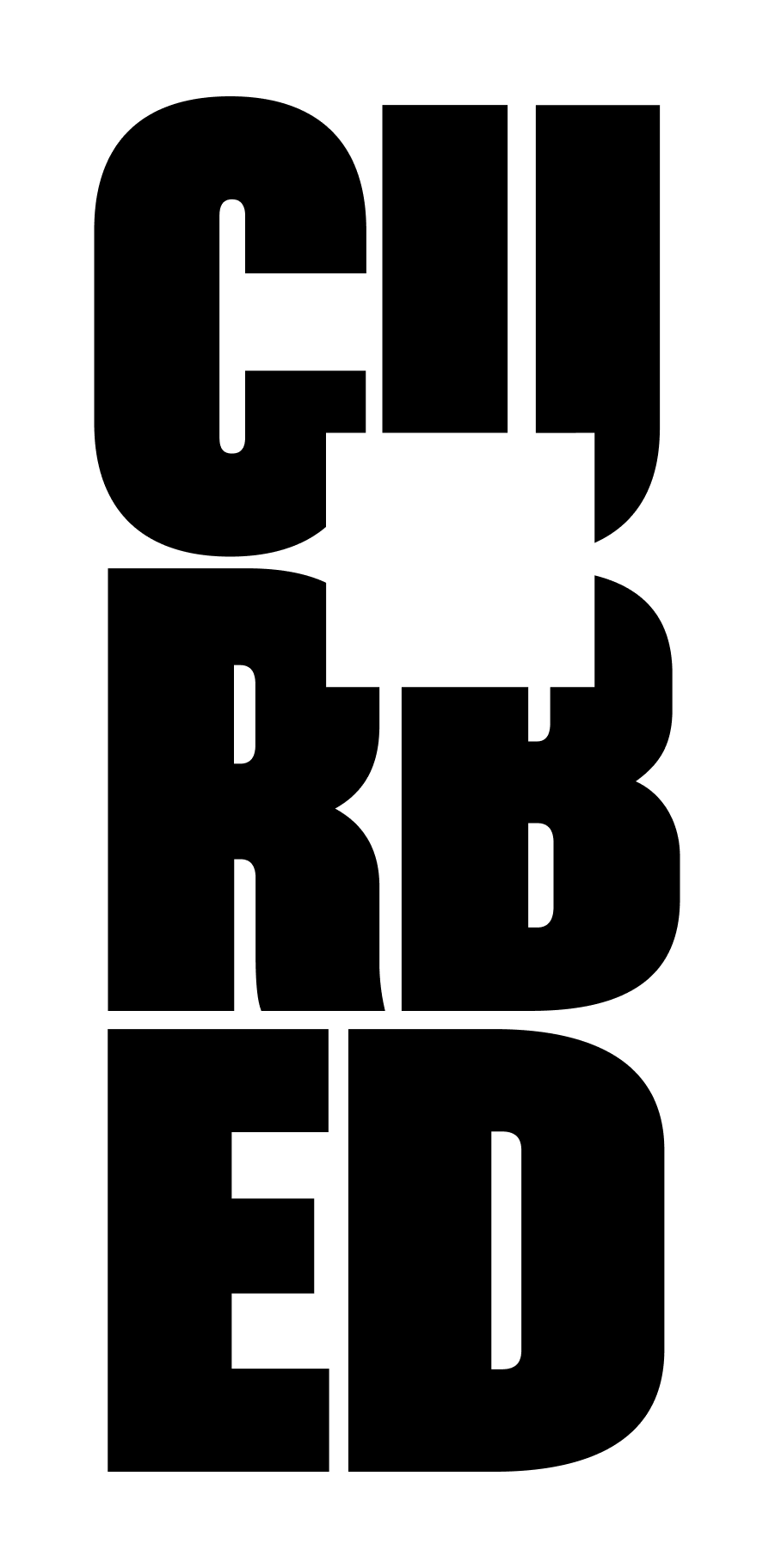
Curbing Traffic
In Curbing Traffic: The Human Case for Fewer Cars in Our Lives, Melissa and Chris Bruntlett chronicle their experience living in the Netherlands and the benefits that result from treating cars as visitors rather than owners of the road. They weave their personal story with research and interviews with experts and Delft locals to help readers share the experience of living in a city designed for people.
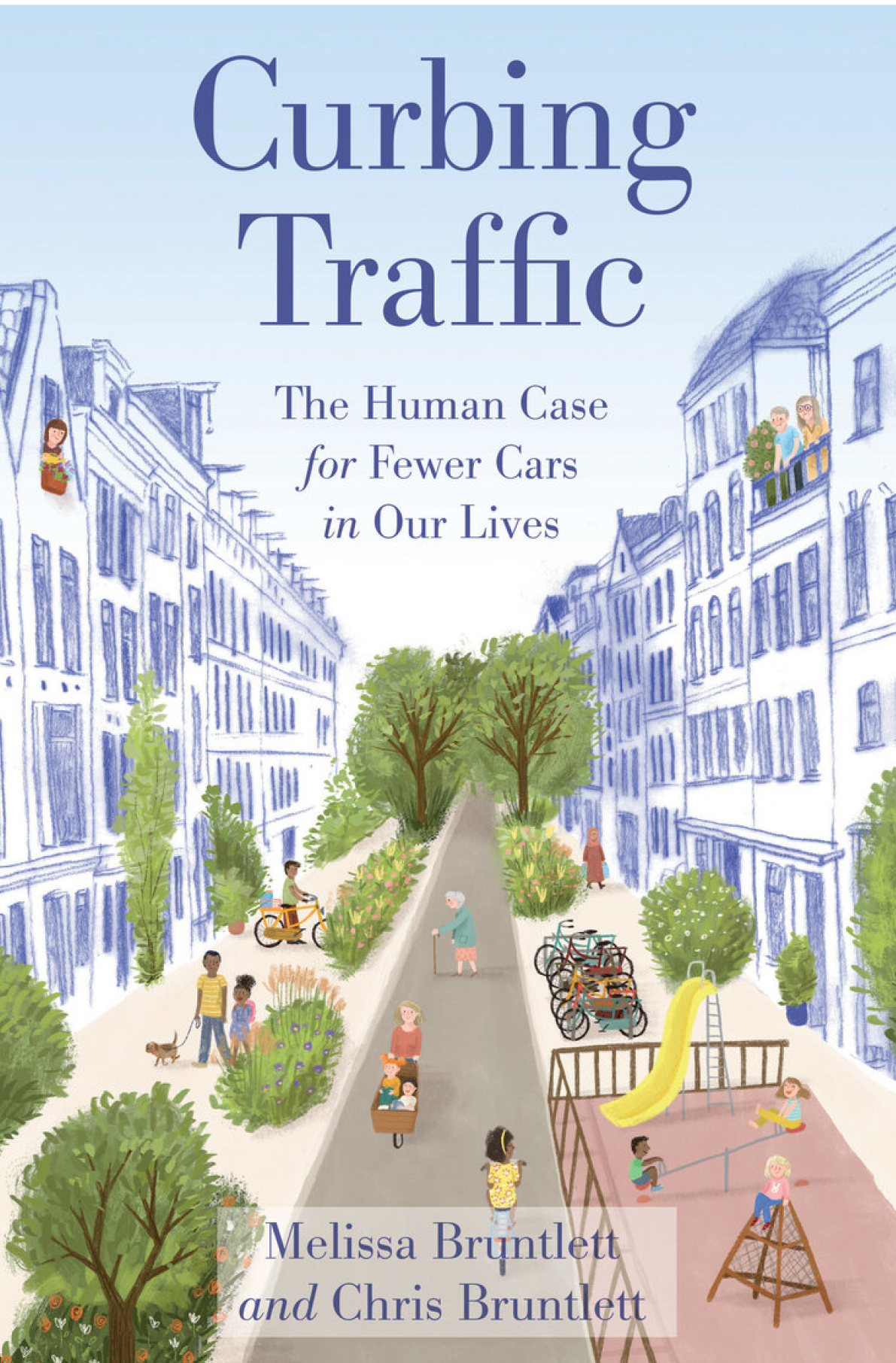
Great Streets
Which are the world’s best streets, and what are the physical, designable characteristics that make them great? To answer these questions, Allan Jacobs has surveyed street users and design professionals and has studied a wide array of street types and urban spaces around the world. With more than 200 illustrations, all prepared by the author, along with analysis and statistics, Great Streets offers a wealth of information on street dimensions, plans, sections, and patterns of use, all systematically compared. It also reveals Jacobs’s eye for the telling human and social details that bring streets and communities to life.

Finding Lost Space
The problem of lost space, or the inadequate use of space, afflicts most urban centers today. The automobile, the effects of the Modern Movement in architectural design, urban-renewal and zoning policies, the dominance of private over public interests, as well as changes in land use in the inner city have resulted in the loss of values and meanings that were traditionally associated with urban open space. Finding Lost Space offers a comprehensive and systematic examination of the crisis of the contemporary city and the means by which this crisis can be addressed.

Streets And The Shaping Of Towns And Cities
The topic of streets and street design is of compelling interest today as public officials, developers, and community activists seek to reshape urban patterns to achieve more sustainable forms of growth and development. Streets and the Shaping of Towns and Cities traces ideas about street design and layout back to the early industrial era in London suburbs and then on through their institutionalization in housing and transportation planning in the United States. It critiques the situation we are in and suggests some ways out that are less rigidly controlled, more flexible, and responsive to local conditions.
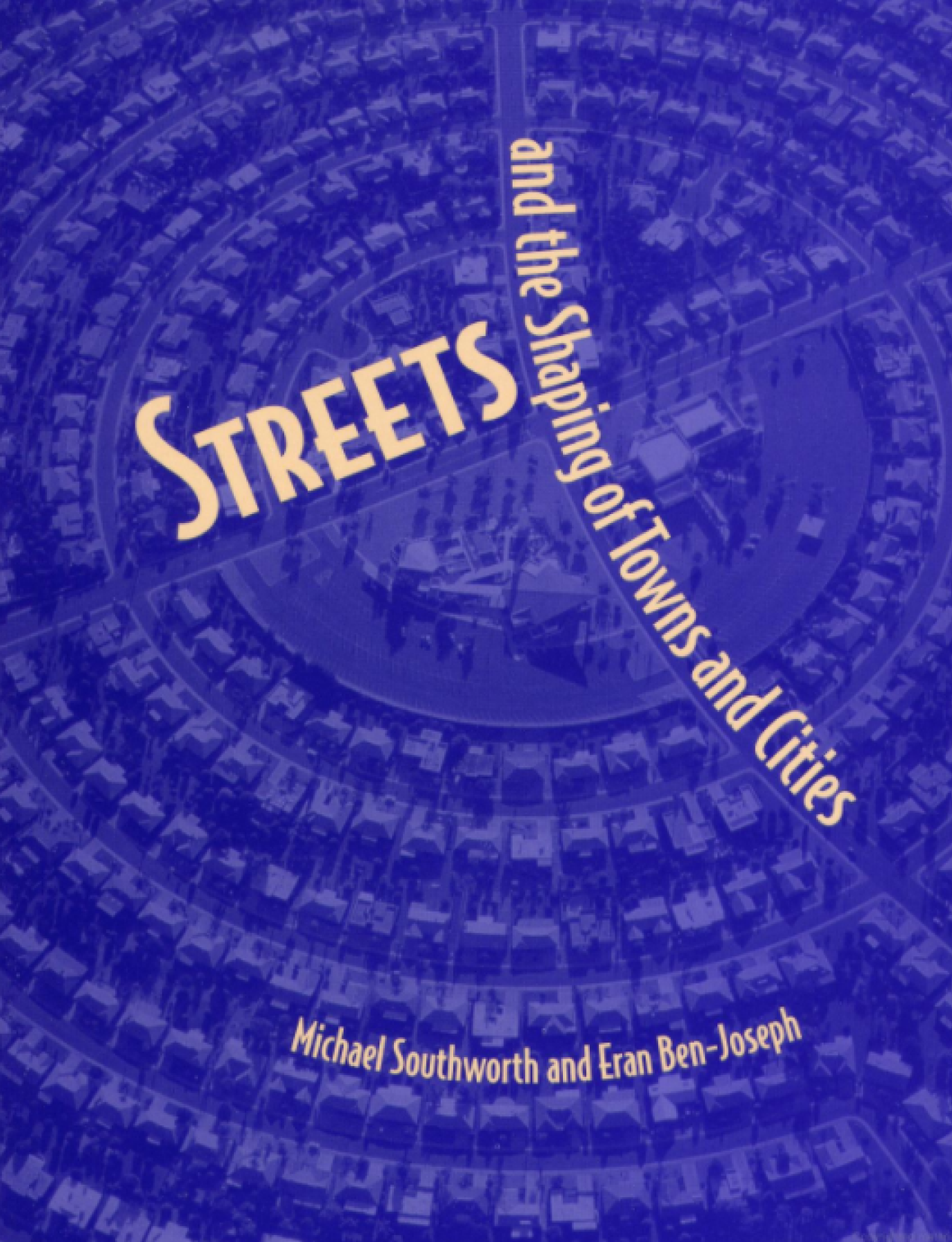
Dream Cities
Dream Cities explores our cities in a new way—as expressions of ideas, often conflicting, about how we should live, work, play, make, buy, and believe. It tells the stories of the real architects and thinkers whose imagined cities became the blueprints for the world we live in.
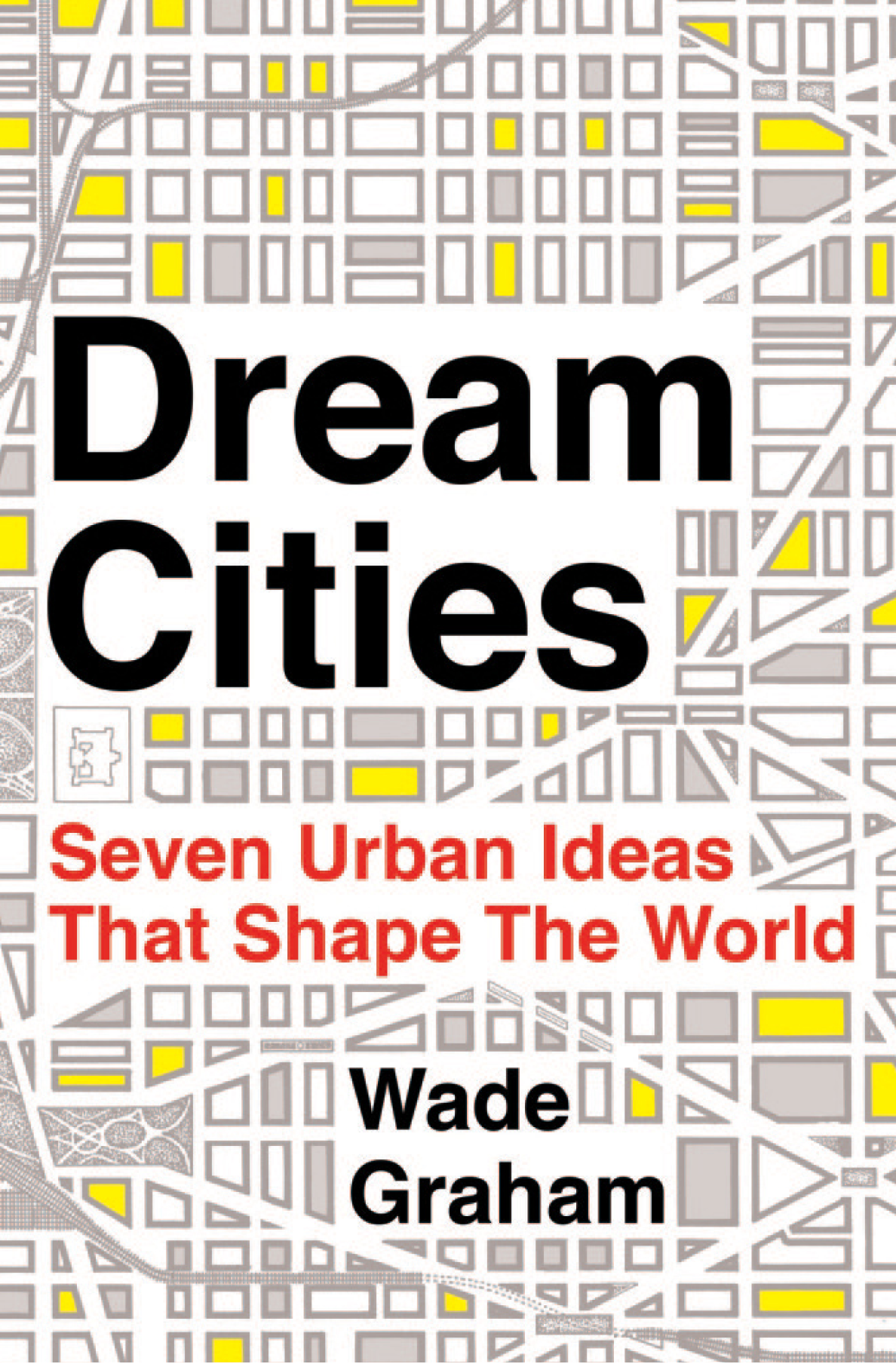
Cities for People
For more than forty years Jan Gehl has helped to transform urban environments around the world based on his research into the ways people actually use—or could use—the spaces where they live and work. In Cities for People, Gehl presents his latest work creating (or recreating) cityscapes on a human scale. He clearly explains the methods and tools he uses to reconfigure unworkable cityscapes into the landscapes he believes they should be: cities for people.
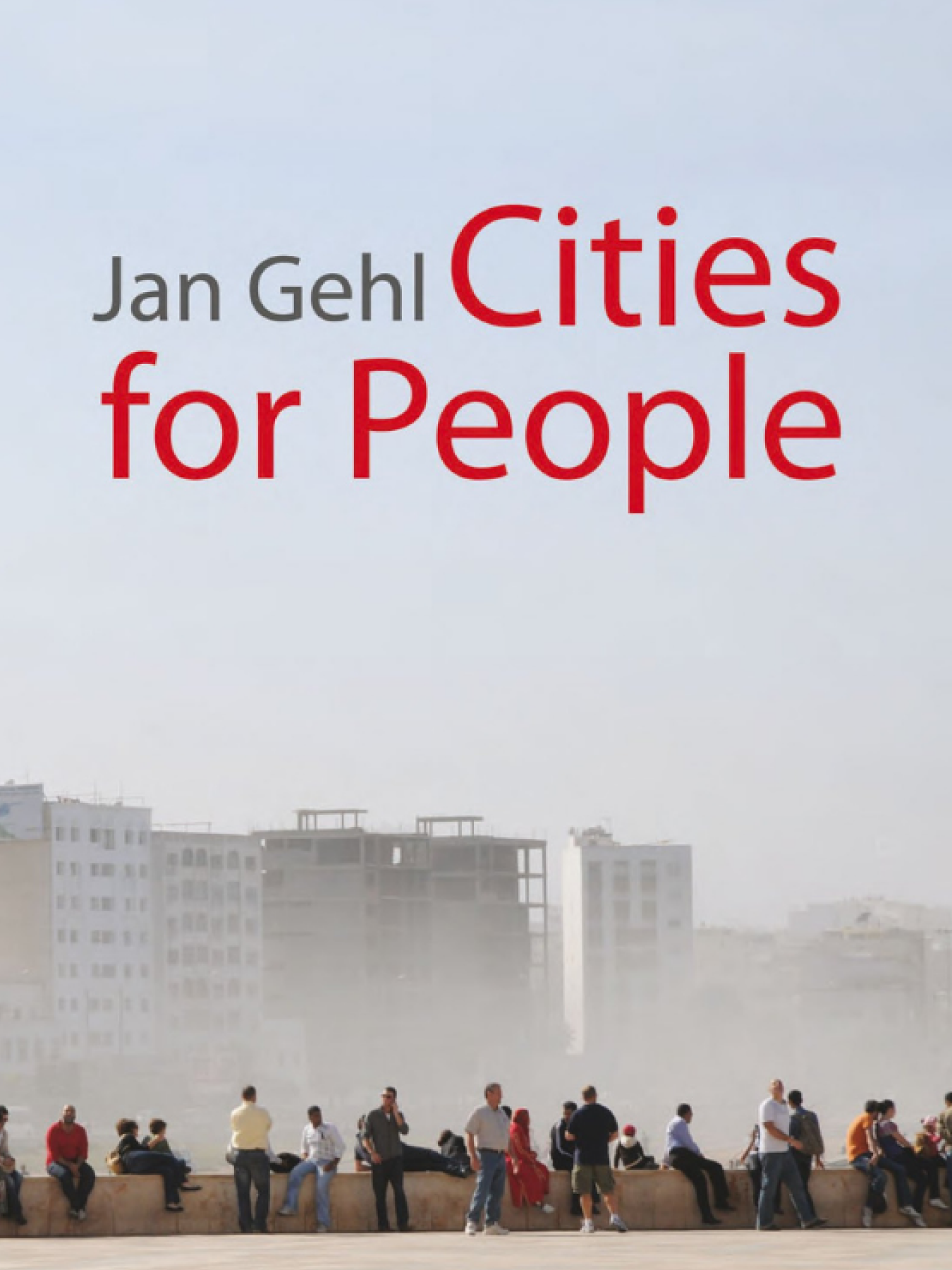
A stealthy reimagining of urban public space
Cities are becoming increasingly privatized: commercial real estate dominates the streets, carving up open space that once belonged to the public and selling it as a commodity to the highest bidder. In this talk, architect Elizabeth Diller explores the causes and effects of this growing threat — and takes us on tour of her groundbreaking projects aimed at creating landscapes for the public to enjoy, from the High Line in New York City to Zaryadye Park in Moscow.
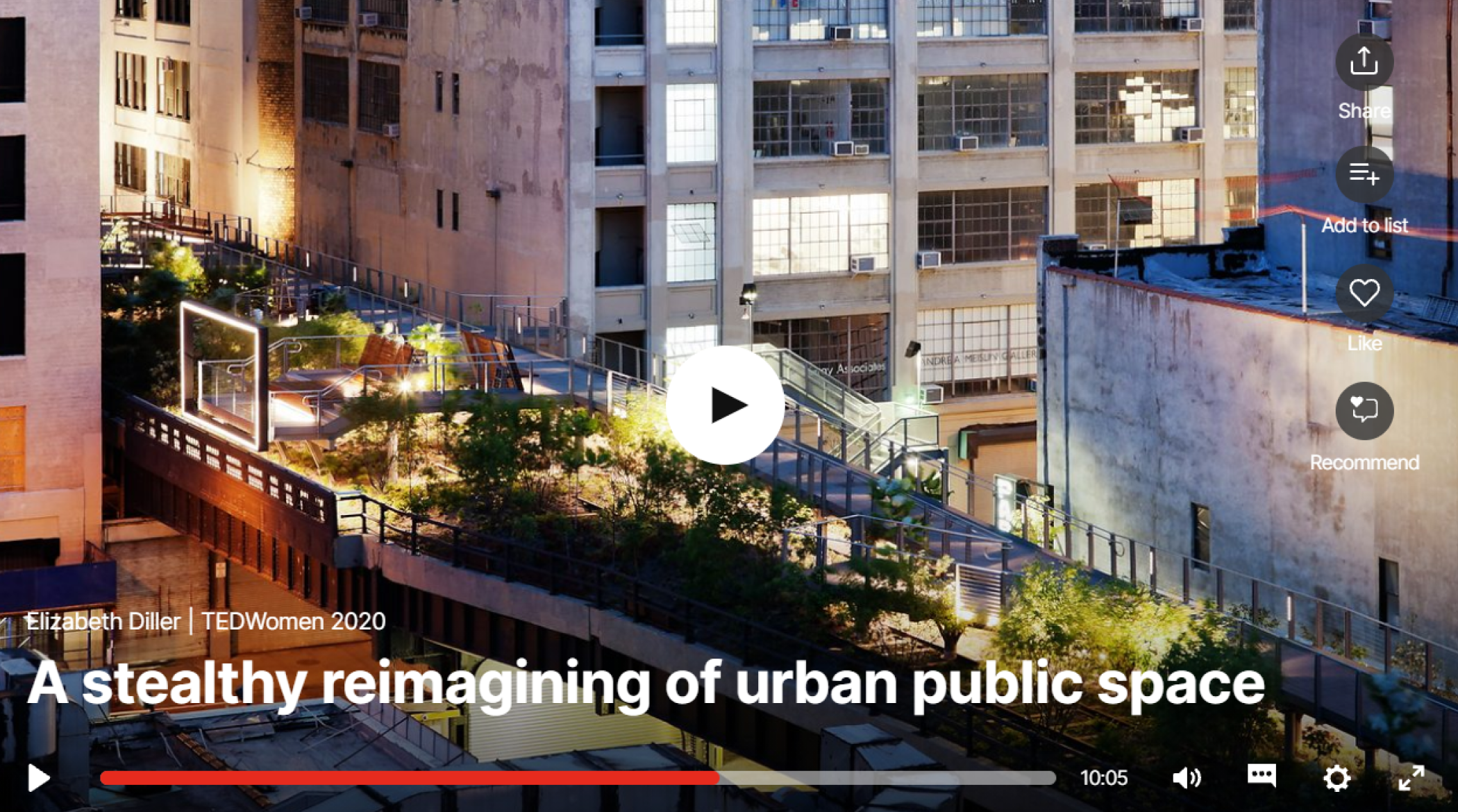
The Ideal City
The city is an always changing human experiment. But in the last half century, it has changed more than ever before – with little sign of slowing down. As this phenomenon takes place, an increasing number of architects, innovators and policy-makers are rethinking the city to make the most of space and resources. This book chronicles the design of urban futures. From apps designed to curb food waste to inventive fresh water infrastructure, The Ideal City explores the many initiatives and experiments, all with the shared goal of making the cities of tomorrow a happier, healthier and more inclusive place to be.

CityLab
Produced by Bloomberg Philanthropies and The Aspen Institute, Bloomberg CityLab is the leading global summit for city leaders and cross-sector urban thinkers, experts, and artists to connect with each other and to create and share scalable solutions for cities’ most pressing challenges.
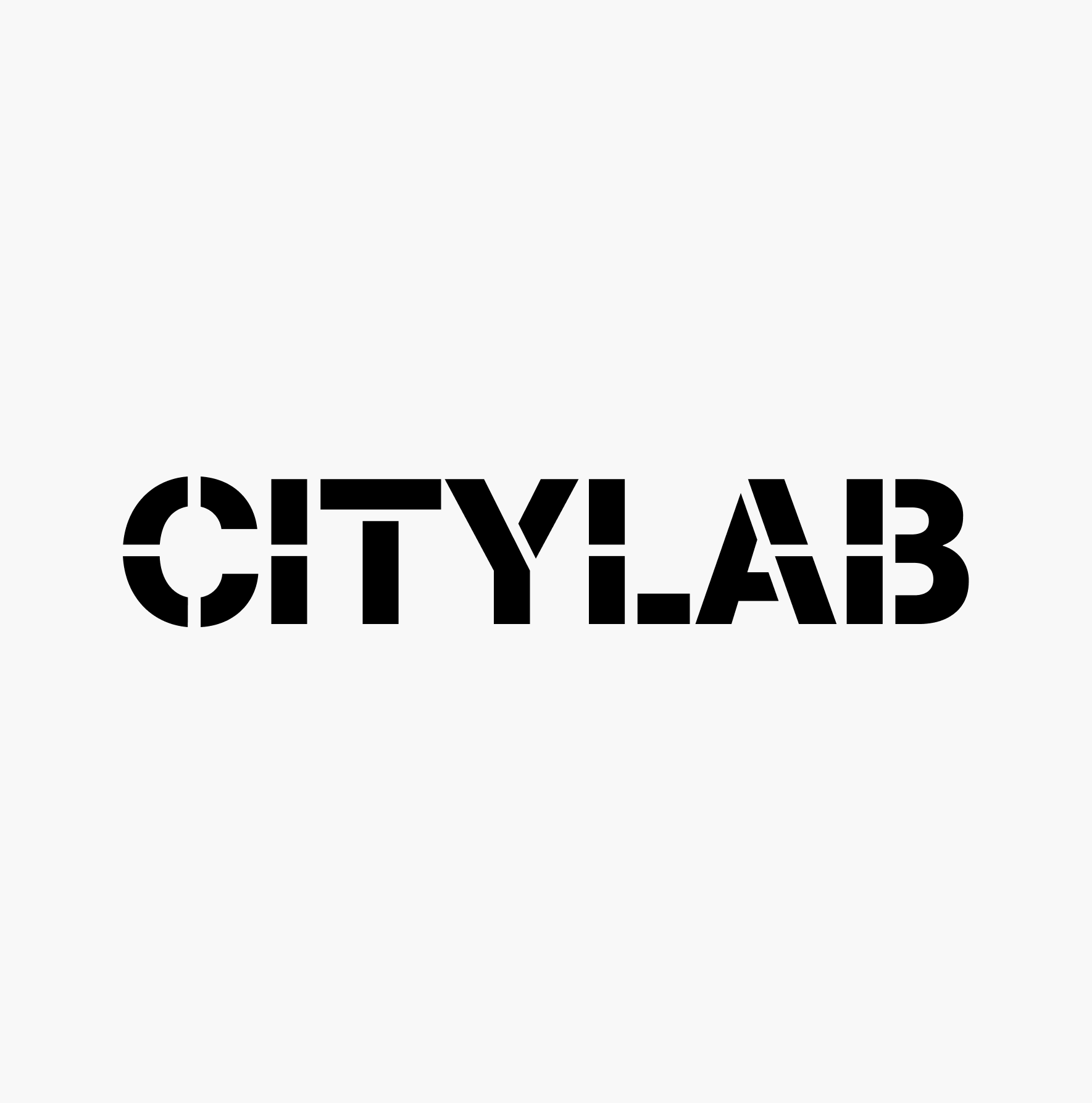
Pedestrian Space
Pedestrian Space is a media, advocacy and research platform established in 2021 to document and explore aspects of walkability as a key dimension for sustainable urban development. The platform provides looks at both best practices as well as barriers to pedestrianization and covers issues of quality of life, health, spatial and social equity and environmental benefit of walkable communities.
The platform is also dedicated to inspiring and engaging in dialogue about the reduction of car dependence as a critical and global issue. The idea of a “culture of walkability” as manifest in several dimensions- including media depictions of walking as a form of mobility, public space that supports quality pedestrian infrastructure and connectivity and the habits, psychological and environmental factors that form our mobility choices- is also a central focus.
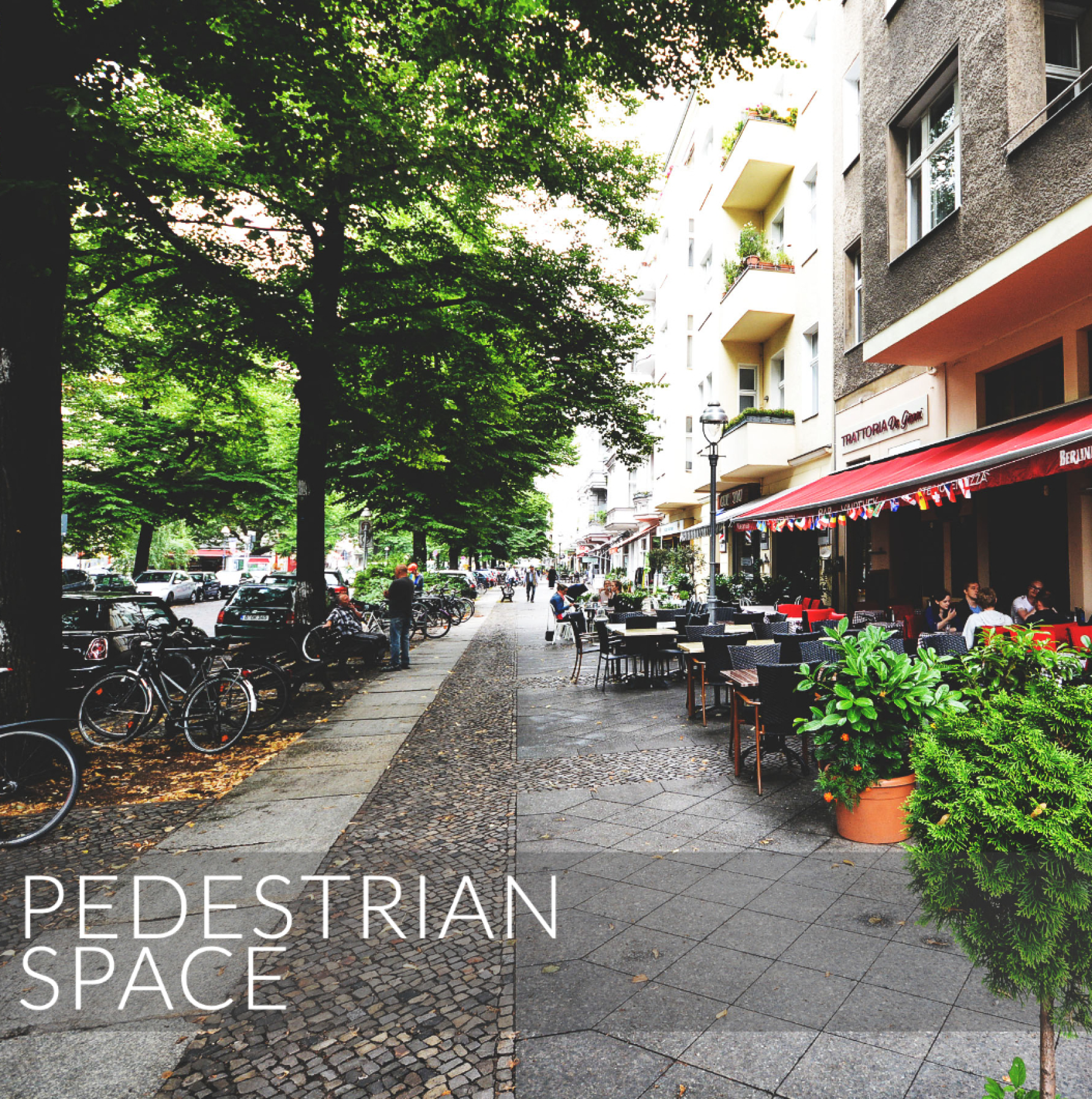
How architecture can create dignity for all
If architect and writer John Cary has his way, women will never need to stand in pointlessly long bathroom lines again. Lines like these are representative of a more serious issue, Cary says: the lack of diversity in design that leads to thoughtless, compassionless spaces. Design has a unique ability to dignify and make people feel valued, respected, honored and seen — but the flip side is also true. Cary calls for architects and designers to expand their ranks and commit to serving the public good, not just the privileged few. “Well-designed spaces are not just a matter of taste or a questions of aesthetics,” he says. “They literally shape our ideas about who we are in the world and what we deserve.” And we all deserve better. Watch the talk on TED.
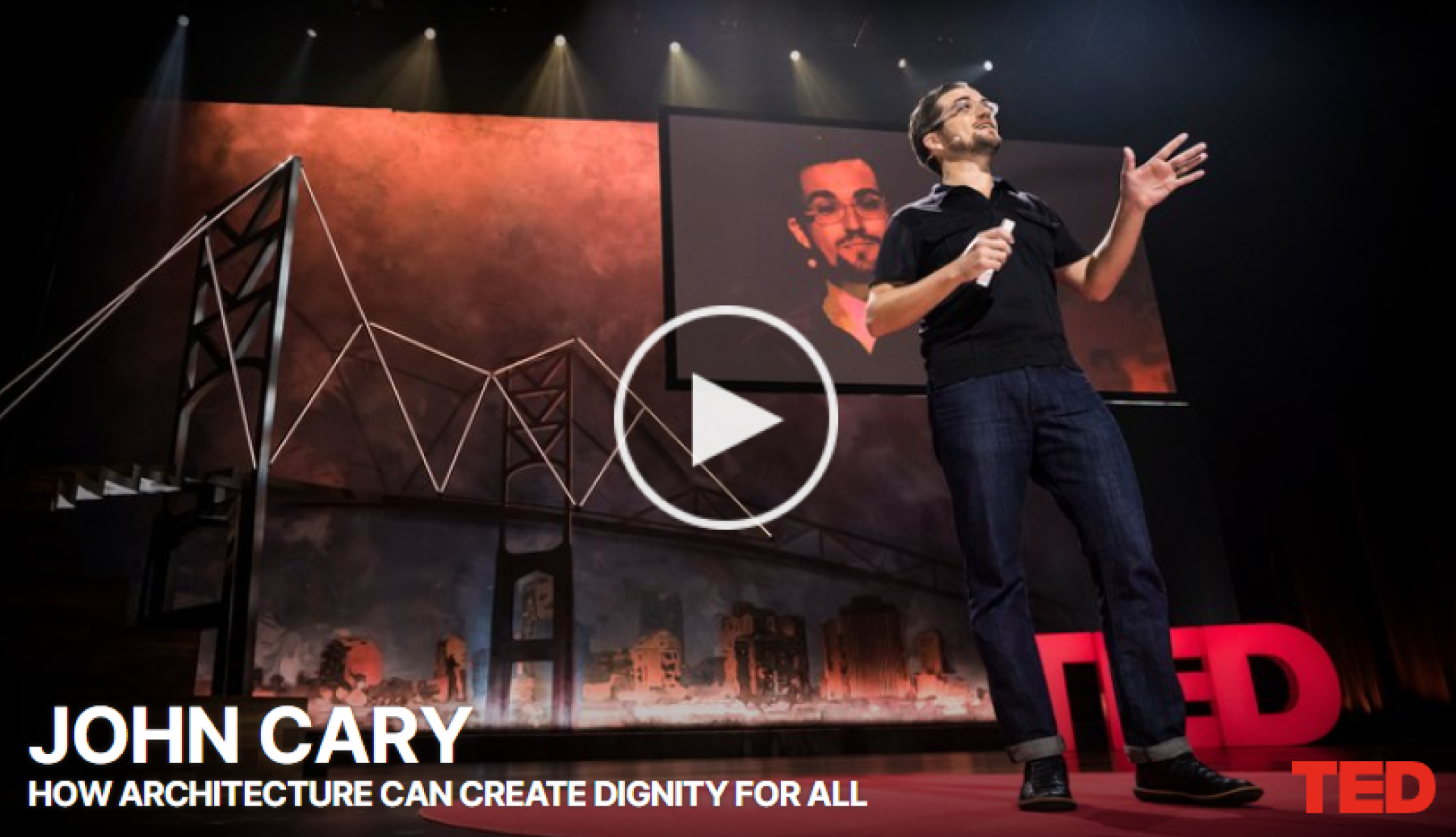
New York’s Streets? Not so mean anymore
In this funny and thought-provoking talk, Janette Sadik-Khan, transportation commissioner of New York City, shares projects that have reshaped street life in the 5 boroughs, including pedestrian zones in Times Square, high-performance buses and a 6,000-cycle-strong bike share. Her mantra: Do bold experiments that are cheap to try out. Watch the talk on TED.

Streetfilms
Streetfilms produces short films showing how smart transportation design and policy can result in better places to live, work and play.
Founded in 2006, Streetfilms has become the go-to organization for educational films about sustainable transportation, and inspires action and behavioral change worldwide. Individuals, public agencies, non-profit organizations, schools, and transportation advocacy groups use Streetfilms to educate decision makers and make change for livable streets in their communities.

The Infinite Happiness
Conceived as a personal video diary, The Infinite Happiness is an architectural experience. The film takes us to the heart of one of the contemporary housing development considered to be a new model of success.
Inhabiting the giant “8 House” built by Danish architect Bjarke Ingels in the suburbs of Copenhagen, Ila Bêka & Louise Lemoine recount their subjective experience of living inside this experiment of vertical village, elected in 2011 « World best residential building ».
As a Lego game, the film builds up a collection of life stories all interconnected by their personal relation to the building. The film draws the lines of a human map which allows the viewer to discover the building through an inner and intimate point of view and questions the architecture’s ability to create collective happiness showing the surprising results of this new type of social model of the 21rst century.

The Human Scale
50% of the world’s population lives in urban areas. By 2050 this will increase to 80%. Life in a mega city is both enchanting and problematic. Today we face peak oil, climate change, loneliness and severe health issues due to our way of life. But why? The Danish architect and professor Jan Gehl has studied human behavior in cities through 40 years. He has documented how modern cities repel human interaction, and argues that we can build cities in a way, which takes human needs for inclusion and intimacy into account. Film website.
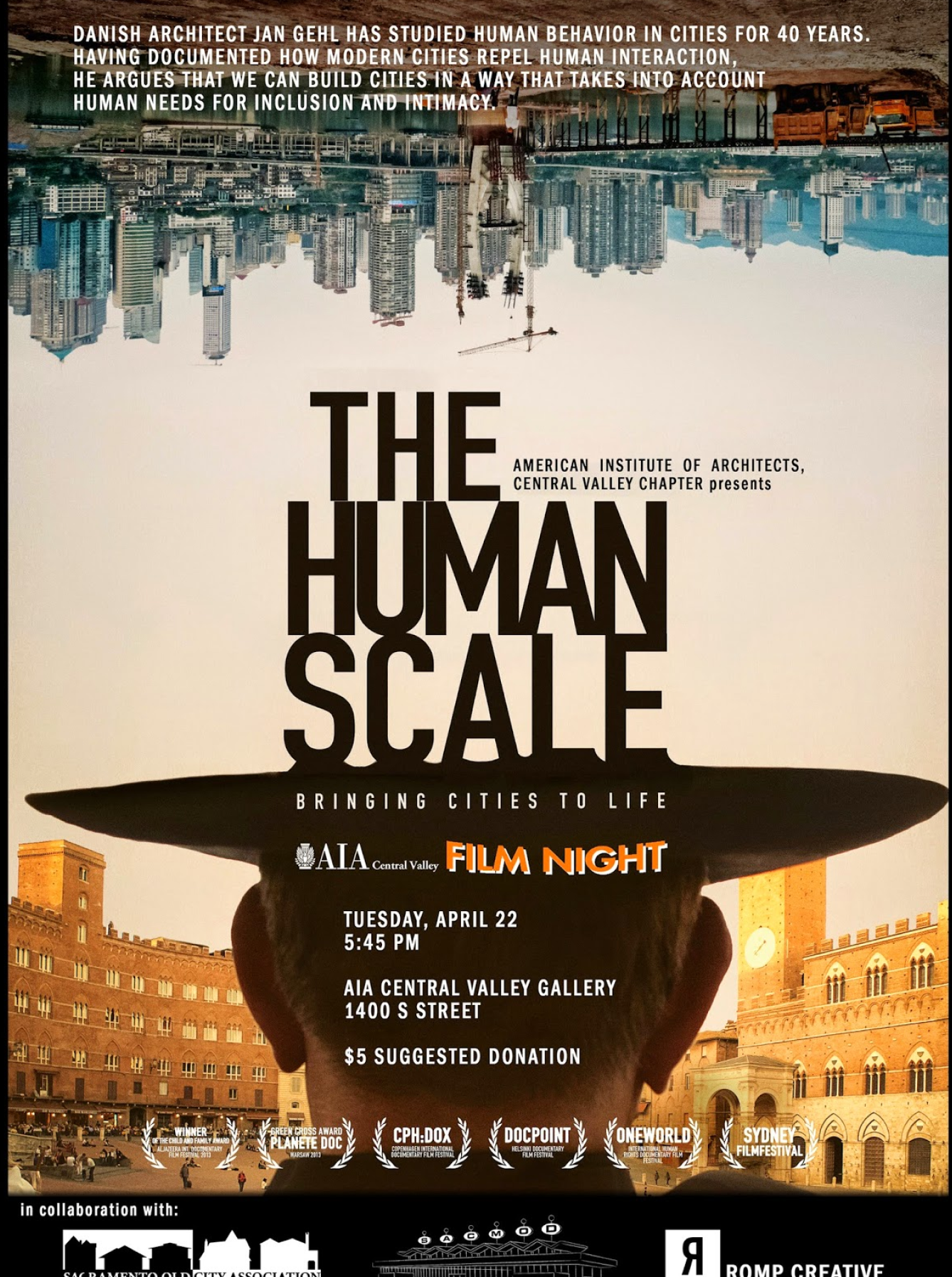
Urbanized
Urbanized is a feature-length documentary about the design of cities, which looks at the issues and strategies behind urban design and features some of the world’s foremost architects, planners, policymakers, builders, and thinkers.
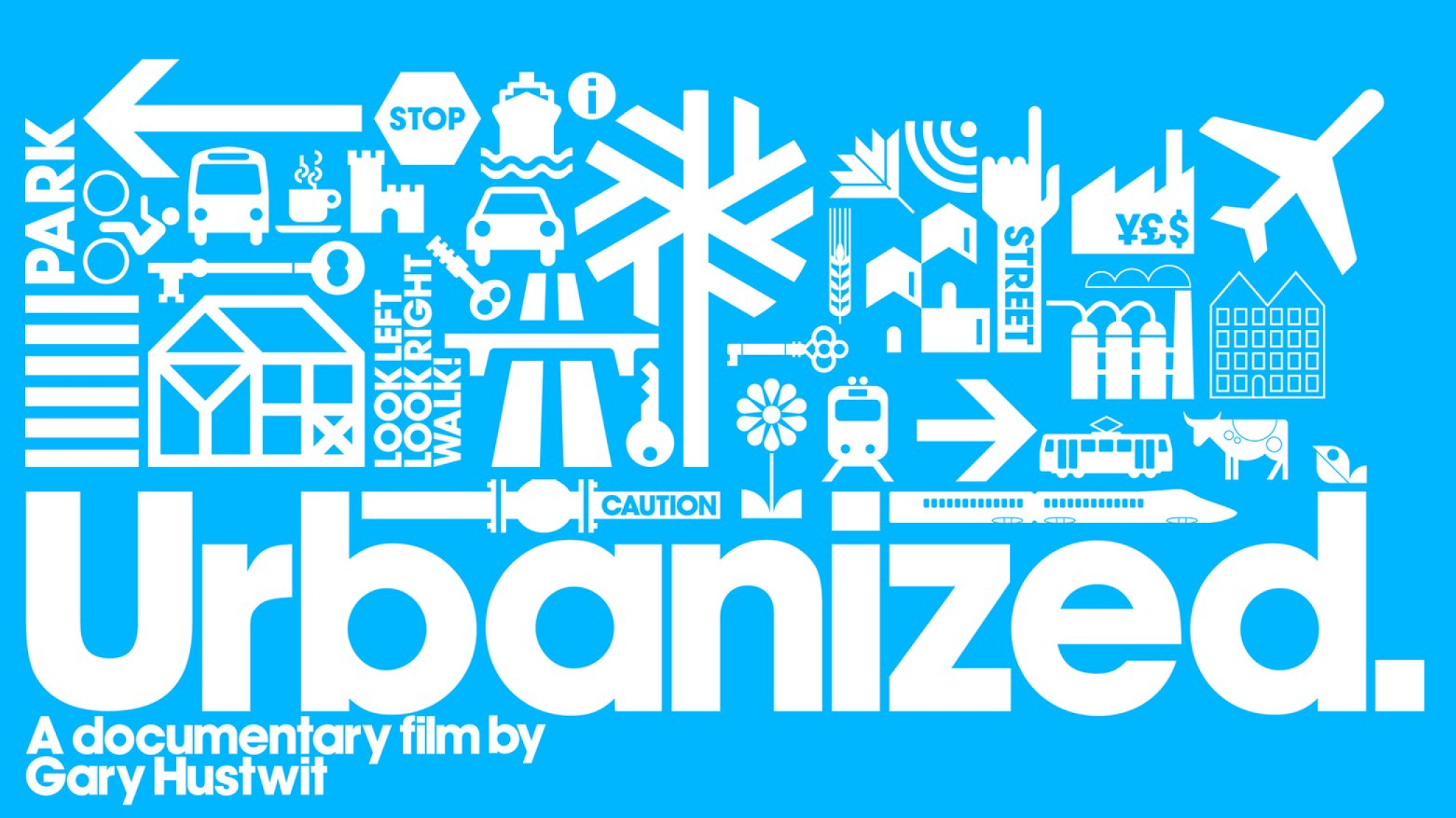
City Beautiful
City Beautiful is a YouTube channel dedicated to educating everyone about cities and city planning, particularly transportation, land use planning, and urban design.

Smart Cities
Over the past ten years, urban planners, technology companies, and governments have promoted smart cities with a somewhat utopian vision of urban life made knowable and manageable through data collection and analysis. Emerging smart cities have become both crucibles and showrooms for the practical application of the Internet of Things, cloud computing, and the integration of big data into everyday life. Are smart cities optimized, sustainable, digitally networked solutions to urban problems? Or are they neoliberal, corporate-controlled, undemocratic non-places? Smart Cities offers a concise introduction to smart cities, presenting key concepts, definitions, examples, and historical contexts, along with discussions of both the drawbacks and the benefits of this approach to urban life.
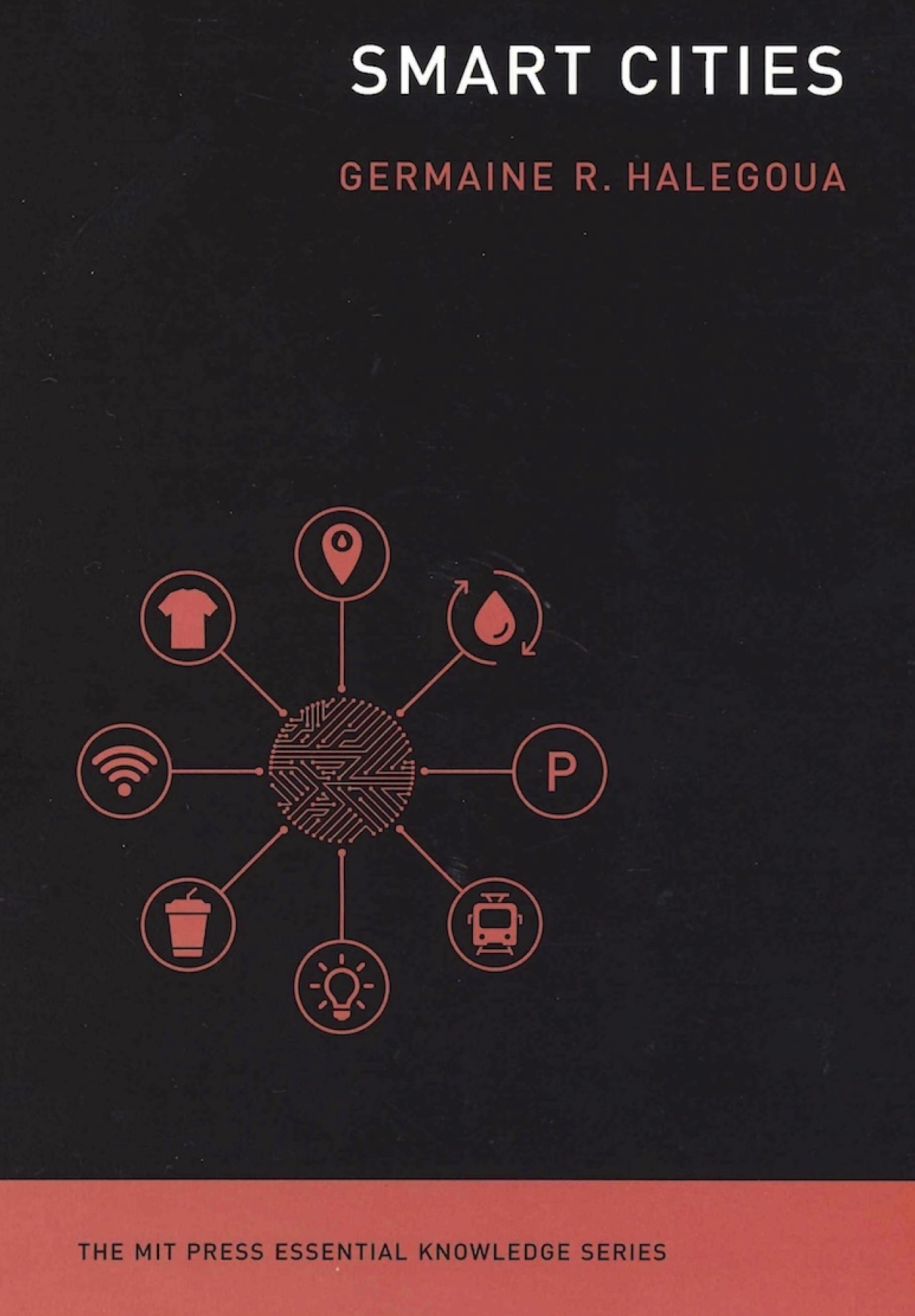
The Help-Yourself City
When local governments neglect public services or community priorities, how do concerned citizens respond? In The Help-Yourself City, Gordon Douglas looks closely at people who take urban planning into their own hands with homemade signs and benches, guerrilla bike lanes and more. Douglas
explores the frustration, creativity, and technical expertise behind these interventions, but also the position of privilege from which they often come. Presenting a needed analysis of this growing trend from vacant lots to city planning offices, The Help-Yourself City tells a street-level story of
people’s relationships to their urban surroundings and the individualization of democratic responsibility.
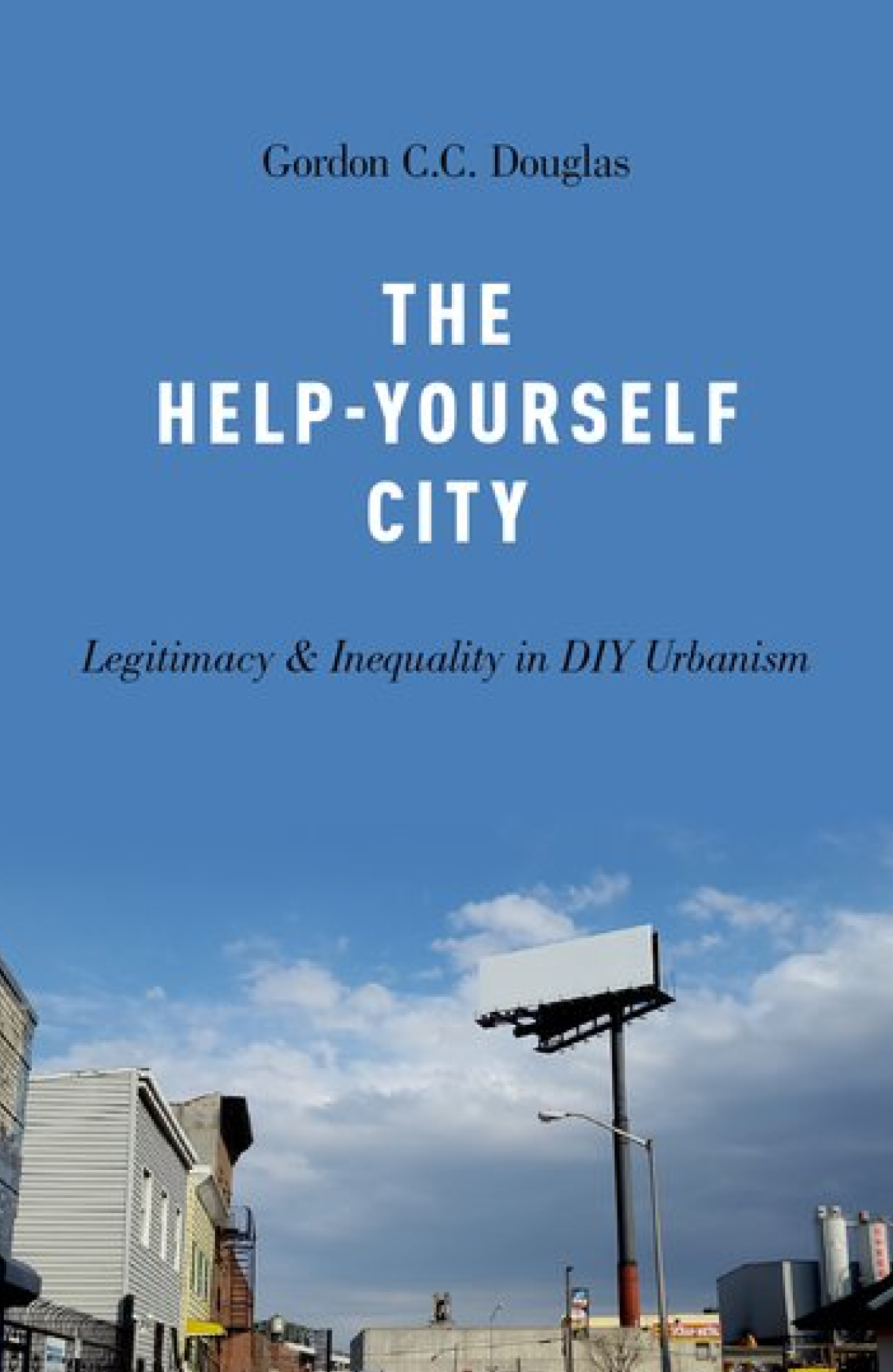
99% Invisible City
The 99% Invisible City: A Field Guide to Hidden World of Everyday Design, Roman Mars and coauthor Kurt Kohlstedt zoom in on the various elements that make our cities work, exploring the origins and other fascinating stories behind everything from power grids and fire escapes to drinking fountains and street signs.
